





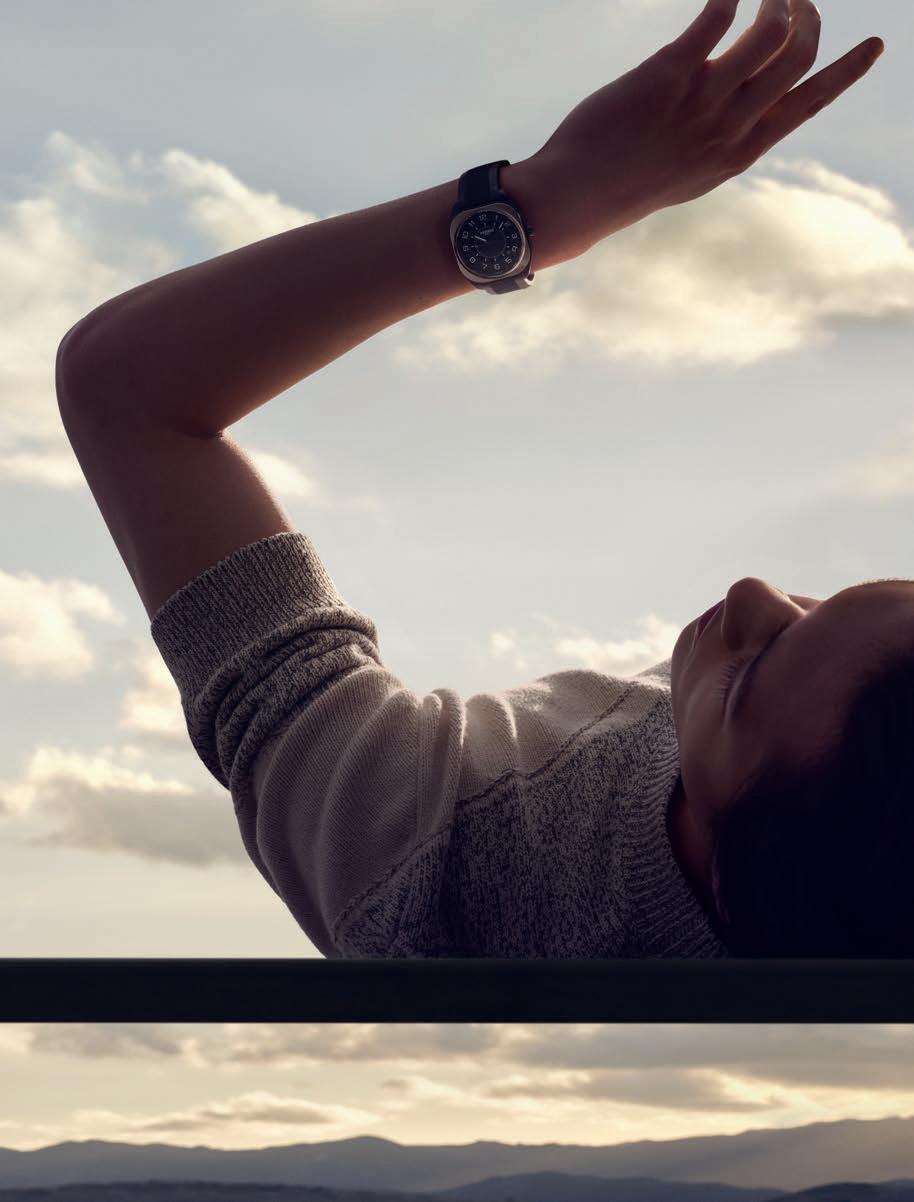


In celebration of 25 years of Raindance
A Family Story Since 1798




14 ON THE HUNT
Collectable news
18 MAD FOR IT
Why humans are compelled to col lect, by Shirley M Mueller
20 OUT WITH THE OLD
John Huddy on new-gen contemporary art collectors
22 COOL AND COLLECTED
London’s auction houses share their top lots with Olivia Emily
24 UP IN SMOKE
Simon de Burton takes a shot at sporting-gun collecting
26 GO FIGURE
Nick Cave is both collector and creator, says Caragh McKay
30 BOOKS ARE DEAD.
LONG LIVE BOOKS!
Olivia Cole on the new vinyl
34 PRIME NUMBERS
Andrew Shirley unpicks data indices
36 NEED FOR SPEED
Simon de Burton meets classic ca r connoisseur Cici Muldoon
40 ATLAS UNBOUND
Andrew Shirley on t he beautiful, old maps with a thrilling new home
44 PASSION PLAYS
C&T H curates a compelling cache of collectables
55 WHAT A GEM
James Gurney uncovers the my stique of rare gemstones
60 TIME CAPSULE
The Beta 21 is back, says James Gurney
62 ART OR CRAFT ?
The l ines are ever-more blurred, finds Nazy Vassegh
66 A GROWING TREND
Jane Anson selects n iche grower champagnes att racting attention
70 WHISKY GALORE
New wave whisky collectors are onto something, says James Gurney
72 POETRY IN MOTION
Va n Cleef & Arpels’s magical musical planétarium-automaton
8 EDITOR’S LETTER
12 CONTRIBUTORS



The Covid boom in collecting might have ebbed away, but that lockdown splurge on collectables changed the way we collect permanently – and it’s not just the how but the who that is different.
We’re younger, broader, more diverse and more digital in our interests. We’re less in thrall to jealously guarded academic expertise, more in tune with the vibe and, yes, we’re more influenceable. That the collecting approach chimes with a more mindful take on consumerism just adds carbon-neutral fuel to the fire – it’s no accident that the British Antique Dealers’ Association (BADA) has reported a surge in millennials joining.
The generational shift of the past few years has brought in new faces and highlighted new interests (and revived some old ones) but there’s still the thrill of the chase, the satisfaction of connoisseurship, the connection with like minds and the real meaningfulness that collecting offers in a fractured, divided and uncertain world. And there’s nothing like finding passionate, engaging experts on Instagram to remind you that social media doesn’t have to be the toxic redoubt of extremists we’re told to fear.
We’ve tapped experts to open up some of the new collecting arenas, look at how the methods have changed, explore the trends and motivations, profile the people and spotlight objects of their desire from contemporary art to rare maps via mid-century Patek and classic Ferrari.
Inside, you’ll see how books are having a vinyl moment (p30), how data is changing the way we collect and the prices we pay (p34), and how old stories are finding new relevance across generational and cultural divides (p26). The Collector demonstrates that collecting is part of who we are, as neuropsychologist, author and collector Dr Shirley Mueller explains in her column, we’re simply born to collect (p18).










What’s the first thing you collected? Books (of course), and later, letters from favourite authors. I’d write to them with my questions and I’ve had lots of incredible responses. What’s the one that got away? I love the famous 1960 photograph by Mark Gerson of TS Eliot, W H Auden, Stephen Spender, Louis MacNeice and a very young and awestrucklooking Ted Hughes at a Faber party. In their photo album, Hughes’s wife Sylvia Plath captioned it ‘a pride of poets’. A rare print came up at Bonhams once but I didn’t have the nerve or the budget. Where’s your favourite hunting ground? In New York’s Strand bookshop I found a signed first edition by the Hollywood columnist Sheilah Graham, F Scott Fitzgerald’s final girlfriend and inspiration for The Last Tycoon. It was only a few dollars; it felt like she was giving me a wave.

What’s the first thing you collected? Dinky, Matchbox and Corgi toy cars, probably. I began amassing them in earnest from around the age of four, along with Action Man figures and accessories. Among favourites was the Red Devil’s parachutist set and the Royal Canadian Mounted Police uniform, which was supplied with Brutus the guard dog. They always got their man. What’s the one that got away? A Steel Rolex GMT Master Reference 1675 wristwatch. It was offered to me by a market trader for £300 in 2001. I walked to the cash machine and returned to find he had sold it for £250. Now it's worth £10,000. More recently, I found a 1976 Ducati 900 Super Sport on Facebook Marketplace, priced at £5,000. It was being sold by helpful family friends on behalf of a deceased enthusiast. They undervalued it by £15,000.

What’s the first thing you collected? The first work I purchased was a Seated Figures lithograph by Henry Moore. It still hangs in our home and gives me joy every day. What’s the one that got away? There have been many, but I try not to have regrets. I remember seeing a work in Paris by the American artist Mickalene Thomas who currently has a show at The Hayward Gallery in London. I said I needed to think about it and it went to another collector. I still regret that hesitation.
Where’s your favourite hunting ground? I don’t have a particular hunting ground, as what I cover for clients is so varied. I acquire works directly from artists, through galleries, fairs and auction houses. My access and sourcing forms an important part of what I do, and what my reputation is built upon.

What’s the first thing you collected? The English impressionist painter John Anthony Park. I was very fortunate to inherit some of his oils, which my grandparents had acquired from his dealer at the beginning of the 20th century. Being a Cornish family, they have a particular resonance. What’s the one that got away? Not very long ago, there was a particularly good small little seascape of my favourite beach at Land's End – also by Park – which I spent much of my childhood running up and down. It was an unusual work and a rare subject, being not representative of his main canon, but a gritty bidding war erupted and I had to duck out.
Where’s your favourite hunting ground? His paintings and his sketches turn up in all sorts of smaller provincial auctions, so I keep a weather-eye out on the slightly more offbeat country sales, just in case.



James Gurney and Olivia Cole
curate the latest news for collectors
Sotheby’s Area_51 Watch Sale in Geneva is breaking new ground in what has been a staid auction specialism dominated by rare Rolex and Patek Philippe watches from the 1940s, 1950s and 1960s. Focusing on character and story, Area_51 brings together a selection of watches that more or less fit the sale’s UFO theme. Going on vibe means that Audemars Piguet and Gérald Genta watches share equal billing with contemporary makers such as Urwerk, Toledano & Chan and Furlan Marri. Estimates range from the accessible (CHF 6,000) to the astronomical (CHF 200,000). sothebys.com

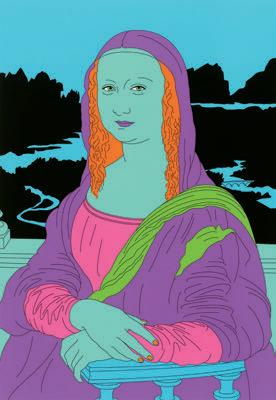

British photographer Jane Hilton’s presentations are always a Photo London highlight. Her enduring love affair with the American West is collected in a beautiful limited edition from The Little Black Gallery. Cowboys & Queens pairs her signature series of rural life and her acclaimed series documenting Vegas’s burlesque community. The work tours across the US this year: from Las Vegas to LA and Oklahoma, before New York at the Palo Gallery in spring 2026, but it’s hard to resist a trip from the comfort of home, too. thelittleblackgallery.com
Royal Salute is not your average whisky maker –from blending already rare and long-aged whiskies to securing a brand home within the Tower of London. When it comes to partnerships, every boundary is pushed, every limit tested: the latest adventure is a collaboration with Nina Ricci’s creative director, Harris Reed, who has designed the special flagons for Royal Salute’s latest release – a 21-year-old whisky co-blended with master blender Sandy Hyslop at the Strathisla distillery. £229, royalsalute.com
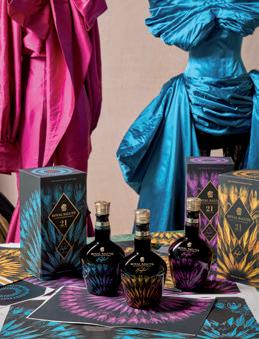
67 Pall Mall (a collection, founded by wine lovers, of seven members’ clubs across the globe) has already broken the fourth wall by blurring the distinction between club and retailer. So it was only appropriate to appoint Dr Christina Makris as a curator for its London club. Makris specialises in the relationship between hospitality and culture, and recently published Aesthetic Dining: The Art Restaurant Around the World. Her current selection for 67 Pall Mall includes works by renowned Irish-born artist Michael Craig-Martin, all of which are available to purchase with 20 percent of proceeds benefiting The Sovereign Art Foundation. 67pallmall.com
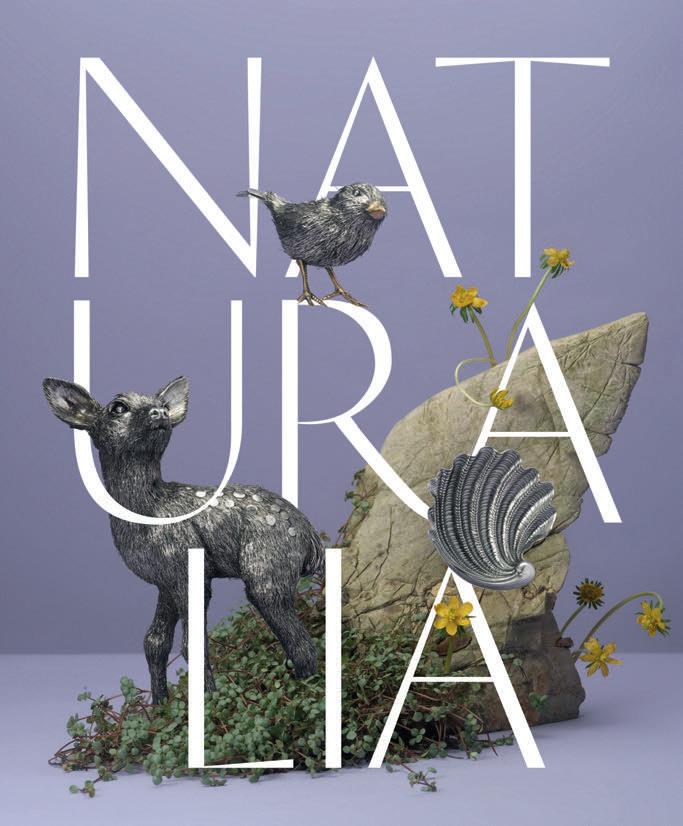



This spring, David Morris has revisited the brand’s emblematic Miss Daisy collection with three new high-jewellery rings featuring extraordinary one-off stones. A round, brilliant cut blue diamond, a peachy Padparadscha sapphire from Sri Lanka, and a vivid pinkpatterned conch pearl (which is a particular passion of CEO and creative director Jeremy Morris, who has spent decades scouring the globe for these rare natural pearls), are the focal point of each ring. ‘These stones are more than just rare treasures,’ says Morris. ‘They hold a deep personal significance and reflect my lifelong fascination with the extraordinary.’ £POA, davidmorris.com.
Christie’s’ ground-breaking Augmented Intelligence sale exceeded estimates and attracted plenty of attention for what is still a controversial field. The top price achieved was for Refik Anadol’s Machine Hallucinations – ISS Dreams – A, a painting generated by machine intelligence from 1.2 million space station and satellite images, which went above estimate for $277,200. ‘Christie’s has taken a bold stance, using the strength of the brand to introduce AI-generated art,’ says Charlotte Heath-Bullock, managing partner at Cultural Communications. There are justified concerns around AI models using existing works without consent, and ‘collectors are interested but wary, concerned to avoid hype of the sort that built around NFTs.’ christies.com
If the spectacular Cartier exhibition at the V&A has your juices flowing, Pragnell has curated a selection of vintage Cartier jewellery pieces spanning the first half of the 20th century, which will be showing at the Mayfair store for two weeks from 26 May, including this striking c.1930 plaque bracelet (pictured left). With square-cut unheated Burmese rubies surrounded with brilliant and baguette cut diamonds, the bracelet is Cartier at its peak, shown here with a 12.17ct diamond bracelet in platinum and a platinum cocktail watch set with baguette diamonds. pragnell.co.uk.


Anora director Sean Baker has called for film fans to watch movies in the communal experience of cinemas. Thousands have shut permanently since the pandemic, and even the legendary Prince Charles – one of the last remaining independent cinemas in central London – is facing closure (you can sign the petition to save it). Meanwhile vintage dealers find enthusiasm for cinema apparatus, from red velvet seats to Deco lighting. And of course the posters: Baker himself owns nearly 1,500 film posters, a museum-quality collection he started as a teenager. ‘Collectors in their 40s love films in living memory,’ says 20th-century dealer Stevie’s Wonders, based in Rye, with Tarantino and Spielberg persistent favourites, along with cult classics such as The Italian Job stevieswondersantiques.com.
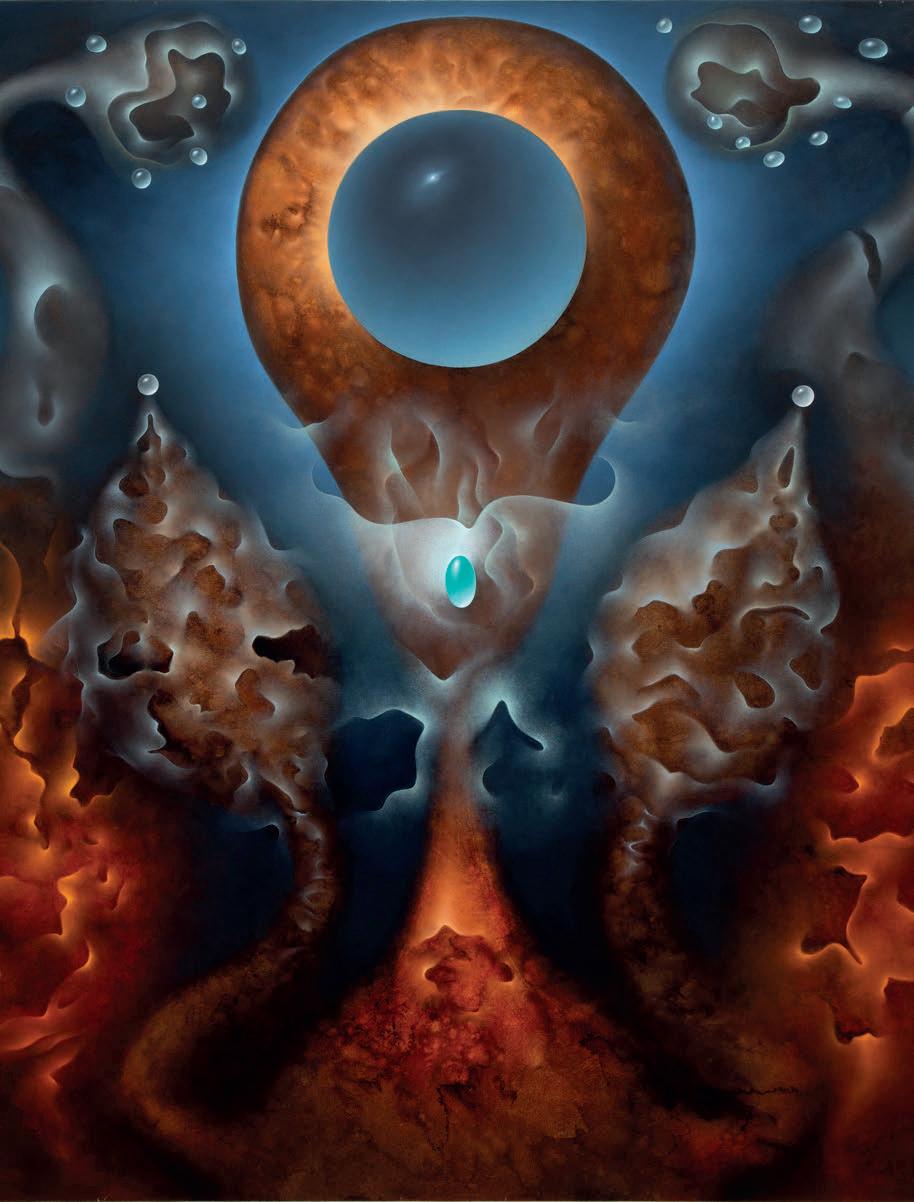
7 May – 17 June 2025
19 E 66th Street New York, NY
Humans have always collected things, but there’s an enigmatic blend of passion, social dynamics and psychology at play, says Shirley M Mueller, MD
transformation of an object into a symbol of prestige and identity. Owning a rare tulip bulb was not merely about horticulture, but about possessing something unique, a tangible token of distinction in a competitive social world.
Another example of how we attach disproportionate value to objects perceived as rare or symbolic, even when their intrinsic worth is negligible, was the Beanie Baby craze of the 1990s, which generated a speculative frenzy around soft toys. Just like the tulips, Beanie Babies carried a veneer of exclusivity, albeit fuelled by clever marketing and managed scarcity.
The reputation of crypto as an exercise in speculation with added antiestablishment flavour was heavily leaned into by the promoters of Bored Ape Yacht Club, a series of 10,000 algorithmically generated images of cartoon apes. Sold as NFTs on the Ethereum blockchain, these images have fetched millions of dollars, with celebrities and tech moguls joining the fray. Bored Ape quickly became a marker of social and financial status (with attendant boasts of exactly how much had been paid), while the image rights and benefits that went with each NFT were almost entirely ignored. Like the tulips of old, Bored Apes became symbols of exclusivity – a digital badge of belonging to an elite, tech-savvy tribe.

While collectors believe they’re driven by rational motives such as investment or aesthetic appreciation, the truth is often more complex and, sometimes frightening. All too easily, habit tips into madness, becoming an obsession that can dominate lives and subvert reality.
Holland’s Tulip Mania reached its peak in 1637. It saw individual bulbs change hands for vast sums, and caused fortunes to be made and lost at unheard-of speed. Families were broken up and lives lost, all in pursuit of rare colour combinations and patterns in an otherwise attractive but unremarkable house plant. Somewhat ironically, the colour breaks and variegations were the result of a virus. Scholars have long debated the balance of speculative greed, status signalling and sheer irrationality as causes, but at its core Tulip Mania reveals a key aspect of collecting: the
Interestingly, the urge to collect isn’t uniquely human and is likely to have an evolutionary origin. Many animal species exhibit collecting behaviours: bowerbirds, for instance, meticulously gather colourful objects to decorate their nests, using their collections to attract mates.
For humans, collecting transcends survival, operating outwardly as a social marker and inwardly as a way of meeting emotional need: we collect objects that hold symbolic or emotional significance, a distinction that underscores the uniquely human capacity to imbue objects with meaning, transforming the act of collecting into a personal endeavour.
PERHAPS MOST INTRIGUINGLY, COLLECTING CAN EVEN SERVE AS A FORM OF PAIN RELIEF, ACTIVATING THE BRAIN’S REWARD SYSTEM, RELEASING DOPAMINE AND REDUCING STRESS
Pursuing a rare object can be a way to experience meaning and purpose, and offer a sense of adventure and accomplishment. Collecting can even serve as a coping mechanism for deeper psychological needs, providing purpose and connection; even if that connection is with inanimate items, they at least offer comfort and stability in an unpredictable world.
Perhaps most intriguingly, collecting can even serve as a form of pain relief, activating the brain’s reward system, releasing dopamine and reducing stress. For individuals dealing with grief, trauma or chronic pain, the structured, goal-oriented nature of collecting can provide a welcome distraction and sense of control. The line between passion and compulsion is thin; for some, the act of collecting becomes an all-consuming obsession. Long-suffering partners will know there’s a fine distinction between it and hoarding.
Collecting is a paradoxical activity with social and emotional drivers as variegated as those Dutch tulips. It’s not just about the objects themselves but about the stories we tell – about who we are, what we value and what we’re willing to sacrifice in pursuit of our passions. At its most extreme, it’s a form of madness, but it’s also a testament to the creativity, resilience and complexity of the human mind. n


John Huddy on how the young are stealing the march when it comes to art collecting in the 21st century
Found bleeding in a backstreet of Rome, selfconfessed forger Eric Hebborn was dealt a lethal blow to the back of the head in January 1996. In a career spanning almost four decades this notorious restorer-turned-forger asserted that he had an artwork in every major museum in the world, infiltrating the international art market with paintings, drawings and even sculpture. Cleverly, he allowed attribution to be the domain of experts from leading auctions houses and dealerships, a tactic he outlined in his memoir Drawn to Trouble: Confessions of a Master Forger. Given the sums involved, this may well have led to his untimely demise.
More recently, Salvator Mundi – the so-called male Mona Lisa, a rediscovered work attributed to Leonardo da Vinci – came under the hammer at Christie’s in 2017; selling in excess of $450m, it’s the most expensive painting ever sold. Purchased on behalf of Prince Mohammed Bin Salman and intended as the showpiece of the new Louvre in Abu Dhabi, it’s been beset with scandal, high-
profile legal proceedings over the pricing alongside questions of authenticity. It’s subsequently been withdrawn from its intended display. Such scandals are almost common currency in the Old Masters world, so it’s hardly surprising these more traditional arenas are increasingly shunned by a younger collecting demographic.

The new millennium has witnessed an explosion of interest in the arts worldwide and a billowing mushroom cloud of art investment. With the media spotlighting the vagaries of traditional collecting, a declining interest in the older staples – Old Masters and English furniture – is no coincidence. Who wouldn’t be enchanted by Maurizio Cattelan’s $6m banana (Comedian, 2024), or the drama of a shredded Banksy (Girl with Balloon, 2006)? One only has to reflect upon the exponential success of the Frieze art fairs, launched in London in 2003 and dedicated to work produced post-2000. Last year’s was attended by more than 90,000 visitors, and it now hosts events in New York, LA and Seoul. A 2022 survey by Artsy (of 1,300 galleries and dealers in 84 countries) found that 64 percent of collectors are aged 35 to 54, while according to the 2024 Art Market Report, the global market for contemporary art is now worth $1.88bn. ‘The segment has become a key pillar of the global art market,’ the report states, ‘now representing 17 percent of its total value, compared to just three percent at the start of the 21st century.’
‘The appeal of collecting contemporary art is ever growing,’ says Sarah Talbot of Talbot Capes Fine Art Management. ‘Young people are feeling increasingly confident in navigating the art world and doing so through the “ultra” contemporary sphere tends to be more straightforward – bypassing auctions to visit fairs, exploring at their own pace, and building relationships with artists and galleries.’
Lifelong collector Gerard Neill, graduate of the Courtauld Institute of Art, has seen his own tastes change in recent years. Passionate about works on paper, he originally hunted out 19th-century drawings but was one of the first to turn his gaze on contemporary British book illustration, forming one of the most prominent collections of foremost British illustrator Angela Barrett’s work. Demand from Neill and others has given validation to the market and the secondary market is now playing catch-up. Similarly, young enthusiasts are leading the charge for collecting manga, graphic novels, film posters, animation cells and original film artwork, a new media canon that will receive curatorial attention at the Lucas Museum of Film Narrative Art, scheduled to open in LA next year. The art-world jungle might still be a little predatory, but its new genres and novel ways of navigating them keep it fascinatingly beautiful.

John Huddy is the founder of ILeopard Creative Arts Advisory n
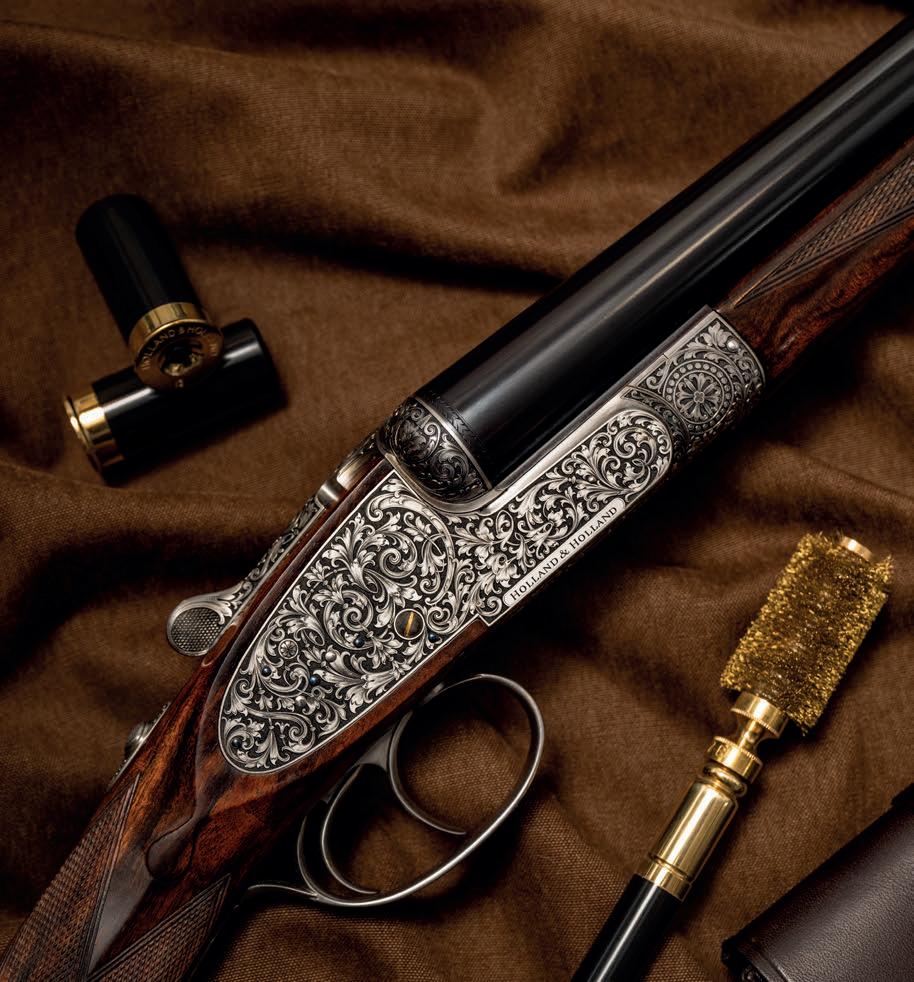














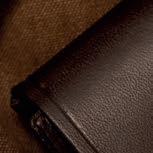
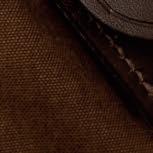


Ottilie Windsor, co-head of contemporary art, London, and André Zlattinger, deputy chairman and head of modern art, Europe
Biggest sale at last auction?
Yoshitomo Nara’s Cosmic Eyes (in the Milky Lake) at £9m, ahead of a big retrospective of his work at the Hayward Gallery in June. Lisa Brice’s After Embah achieved an extraordinary amount against its estimate (£1–1.5m), selling for £5.4m and doubling the SouthAfrican-born artist’s record. What’s trending right now?
Surrealism has had a real renaissance in the last few years, especially overlooked women like Remedios Varo and Leonora Carrington alongside more obvious names like Magritte. We’re always excited about new artists, but there’s less vim in the wet-paint market than there's been previously, and more of a flight to the stability of blue-chip artists. There’s also something to be said for beauty. Recently, the market has been less accepting of works that are important but visually awkward, and we've seen huge competition for aesthetically pleasing works. Who are the collectors? Very much global, and we’ve been seeing new people coming to the market from other collectables, like cars, jewellery and handbags.


SOTHEBY'S ARTIST: Lisa Brice, After Embah PRICE: £5.4m

Following their major evening sales in contemporary and modern art, the auction house experts share their top lots and hot names with Olivia Emily



BONHAMS ARTIST:Georgia O'Keeffe, White PrimrosePRICE $4.4m


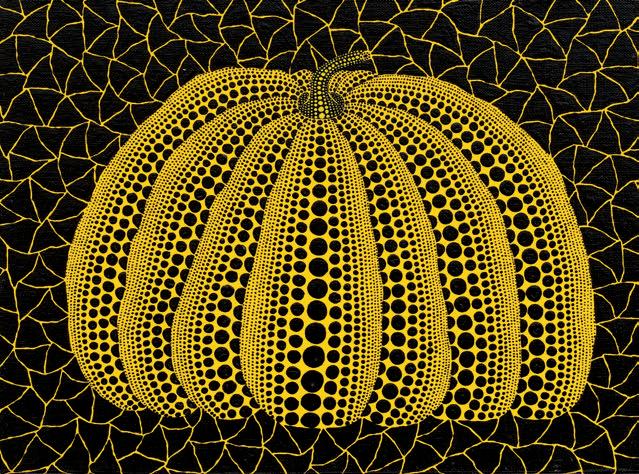
Olivia ornton, head of modern and contemporary art, Europe




Marina Ruiz-Colomer, head of post-war & contemporary art
Biggest sale at last auction?
Georgia O’Keeffe’s White Primrose, at $4.4m at our November New York sale. We also made a record price with Gertrude Abercrombie’s Silo at Aledo ($864,000), which smashed the $120–180,000 estimation. In April [2025], our top lot will be Bridget Riley’s Myrrh (1985), part of her Egyptian palette series, estimated at £1.5–2.5m. What’s trending right now? Surrealism. Some of these works are now unattainably expensive, so collectors are looking at subsets within the movement and contemporary artists influenced by it. Collectors have been looking at O’Keeffe for years; she is part of the trend in rediscovering artists, as are Magritte and Paul Delvaux. Danielle Mckinney, Sophia Loeb, Daisy Parris and Francesca Mollett are all names you’ll want to know. Who are the collectors? The average age of our participants has decreased. We have new, younger bidders in each auction and their collections are built following their own varied taste, which is enriching to see. More women are collecting – and very intentionally, following specific threads. Many collect art by women because it has been undervalued.


Biggest sale at last auction? Joan Mitchell’s Canada II (1975) at £2.7m. Other leading lots were Jean Michel Basquiat’s Pattya (£1.7m) and a work on paper by Picasso (£368,300). What’s trending right now? Both established leading names and the rising stars of contemporary art. At the top of the market, Gerhard Richter, Hockney, Yayoi Kusama, Picasso, Jean-Michel Basquiat, Magritte and Paul Delvaux. In the younger generation, Lisa Brice, Flora Yukhnovich, Jadé Fadojutimi and Lynette Yiadom-Boakye. Last year, we debuted almost 120 artists at auction. Young, cutting-edge names to watch include Joseph Yaeger, Ding Shilun, Oliver Bak, Lenz Geerk, Justin Caguiat, Li Hei Di, Florian Krewer and Nathanaëlle Herbelin. We’re seeing more direct participation by collectors following particular emerging artists, whether that’s blue-chip collections looking to add contemporary names or new collectors acquiring work by living artists that speak to them. Who are the collectors? Millennial and Gen Z buyers now make up almost 30 percent of our engagement. It’s really exciting to work with collectors who are just getting started.
Anna Touzin, senior specialist, post-war and contemporary art and co-head of the 20th/21st Century: London Evening Sale



Biggest sale at last auction? RenéMagritte’s La Reconnaissance Infinie at £10.3m, the leading price for the March season in London. Other great prices were achieved by Tamara de Lempicka’s Portrait du Docteur Boucard (£6.6m) and Francis Bacon’s Portrait of Man with Glasses III (£6.6m). What’s trending right now? We achieved a world record for Danielle McKinney and Emmi Whitehorse, as well as one of the key names in the School of London, Michael Andrews’s School IV: Barracuda under Skipjack (£6m). Also, Jenny Saville, whose Study for Pietà IV sold in the evening sale. The National Portrait Gallery has the first major UK exhibition dedicated to her work [supported by Christie’s]. Who are the collectors? In March, we had registered bidders from 27 countries. Our 20/21 evening sale format allows us to present a diverse range of leading artists, bringing together impressionist, modern, postwar, and contemporary pieces in a single auction, and collectors love it.
Forget stocks and shares and take a sporting chance on a gun, says keen shot Simon de Burton
One man who knows them all inside-out is sporting gun expert and specialist auctioneer Gavin Gardiner. He’s been in the business man and boy for 35 years, and runs his own saleroom near Pulborough, West Sussex. ‘ With interest rates slowly declining again, people might feel they can justify liberating some savings to buy a sporting gun, which, in the worst-case scenario, will provide them with no return on investment but lots of fun,’ says Gardiner.
‘ What many people don’t realise is that the market is currently more favourable to buyers than it has been at any time since I started in the business during the late 1980s.
‘ If I had £10,000-20,000 to play with, I’d be tempted to put it into a good shotgun by one of the great British makers –such as Purdey or Holland & Holland – because pre-owned examples have become very affordable compared with ten or 20 years ago.’

We’ve all heard about ‘passion investing’ in classic cars, watches and wine instead of the boring old stock market. But how about taking a shot at collecting sporting guns?
The term ‘sporting gun’ generally refers to any classic English or European shotgun designed for game or clay shooting, from early hammer guns of the 1860s to the sidelock ejector design introduced in the 1890s and still favoured today.
The best are made using the finest materials and are elaborately engraved, with the most sought-after being English models such as Purdey, EJ Churchill, Holland & Holland, Westley Richards and Boss & Co – although Italian names such as Fabbri and Luciano Bosis are also highly regarded.
G ardiner attributes the current affordability of used shotguns to the fact that the new breed of young, super-rich buyers are more interested in new guns with on-trend features such as modular designs, integrated smart technology and the over-and-under (as opposed to side-by-side) configuration. The old traditions of shotguns being handed down through generations and of families remaining fiercely loyal to a single maker also appear to have fallen by the wayside.
‘IF I HAD £10,000£20,000 TO PLAY WITH, I’D BE TEMPTED TO PUT IT INTO A GOOD SHOTGUN BY ONE OF THE GREAT BRITISH MAKERS SUCH AS PURDEY OR HOLLAND & HOLLAND’
I t all means specialist auctions such as Gardiner’s have become rich hunting grounds (is that a pun?) for more old-school shots who appreciate the opportunity to buy a ‘best English shotgun’ that might previously have been financially out of reach.
A s a rule, the value of a matched pair of guns is usually double that of a similar single gun – but, remarkably, Gardiner says he recently sold a pair of lightly used, vintage Purdeys for £29,000 that the buyer had left unused since buying them in 1987 – for £39,000.
Typically, the secret of buying a good sporting gun is to go for the best quality and condition. Although well-known names represent safe bets, equally good-quality guns by lesser-known English makers (Henry Atkin, Stephen Grant, Joseph Lang) are worth considering and can be even more affordable than their more popular counterparts. However, if you’re considering a purchase, be quick. ‘British buyers have been standing by and watching prices fall, but the Americans haven’t,’ says Gardiner. ‘They are taking advantage of both the current affordability and a very favourable exchange rate to hoover up all the bargains.’
Gavin Gardiner’s next gun sale takes place on 30 April. Catalogue and bidding details are available at gavingardiner.com n


























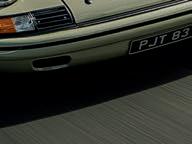











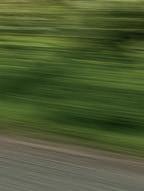


There’s always been more to Staffordshire figurines than decorative value and Nick Cave’s
The Devil – A Life is part of a traditional ceramic expression that covers all human life, says Caragh McKay
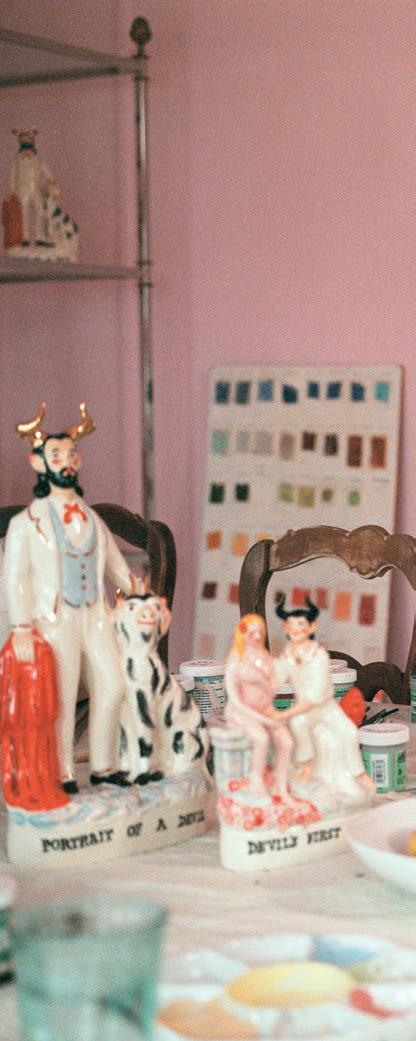

don’t collect art, but I have been collecting Staffordshire figurines for maybe 20 or 30 years,’ Nick Cave, the musician, poet, writer and composer confessed to Philippe Van Cauteren, artistic director of SMAK, Ghent’s Municipal Museum for Contemporary Art, last year. The pair were discussing Cave’s latest work, The Devil – a Life, a series of 17 glazed ceramic figures that charts the cradle-to-grave story of the devil.
‘The first one was a birthday gift from a friend,’ Cave said. ‘It was a figurine of Christ standing with his hands tied behind his back, wearing a loincloth that sat very low down. It was sort of an erotic Christ sculpture. I didn’t know anything about Staffordshire figurines at the time, but I loved it and carried it from house to house.’
Those familiar with Cave’s oeuvre will know that the power of confession and religion are regular themes, but the all-round cultural hero proudly admitting to a fondness for 19th-century pottery typically found on cottage mantelpieces might come as a surprise. Cave’s entire The Devil – a Life series is something of a homage to the Victorian Staffordshire figurine. It was while sitting and looking at one of his own Staffordshire sculptures just after his mother died in 2020 that Cave, who learned pottery as a teenager, had the idea of using ceramics as a medium to express his abiding interest in faith. Very, as it happens, Staffordshire.
‘I started seeing more of these religious sculptures, some with flat backs because they were designed to sit against the fireplace wall and be viewed only from one side,’ Cave said of his deepening fascination. ‘I found it intriguing that these little sculptures were made expressly for the home – like a kind of Victorian doll world – and I just started buying loads of them.’
Religious figures, whether biblical or contemporary, were hugely popular subjects for the famed Midlands potteries in the 19th century. From Moses to Dwight Moody (an American evangelist) and Ira Sankey (a gospel singer) to Cave’s early ‘Christ at the Column’ gift, the religious-themed pieces are some of the best according to Stephen Duckworth’s 2017 book, Victorian Staffordshire Pottery Religious Figures: Stories on the Mantelpiece
Simon Spier, curator of ceramics and glass (1600–1800) at the Victoria & Albert Museum, highlights their enduring appeal. ‘Staffordshire is one of the most important ceramic production regions in British, and probably European, history,’ he says. ‘And while Midlands potteries were known for mass-produced ceramics aimed at an increasingly democratic market, they also created fine porcelain and tableware.’
Figurines had been produced by the area’s potters since the mid-1700s, with some of the early designs – eerie, ghost-like characters – now so rare as to be highly valuable. By the mid-18th century, there were figurines inspired by engravings, satirical cartoons and real-life crime stories. As Spier says: ‘Staffordshire manufacturers were highly responsive to public events, and made history, popular culture, political history and religious history accessible.’
The factories were quick to react to current affairs, producing conversation pieces such as the 1828 three-part ceramic of The Red Barn Murder (which sold for £11,760 at Bonhams in 2010) that depicted a notorious killing the previous year. Maria Marten was shot by her lover William Corder in Polstead, Suffolk, before their planned elopement. Corder deceived her family into believing they had fled and settled, but Maria’s stepmother dreamt that she was killed and this reportedly led police to Marten’s body. Corder was duly hanged before a massive crowd and the crime scene became a macabre tourist attraction, with visitors dismantling the barn for souvenirs. The case inspired songs and plays, as well as figurines.
In 2023, the 1825 version of The Death of Munro, arguably the most iconic Staffordshire figurine depicting a young British army officer being mauled by a tiger, sold at Sotheby’s at a hammer price of £30,480, confirming an ongoing enthusiasm for the genre.
‘The charm and naivety of Staffordshire figures have always been part of their appeal,’ says Spier of the era-spanning fascination, pointing out that as potteries’ workers churned out characters, they often did so without concern for anatomical accuracy, leading to the naive style that defines the figurines. And yet there have always been dedicated Staffordshire collectors and researchers. Spier cites Herbert Read, the art critic known for his work on Henry Moore and Barbara Hepworth. ‘In the early 20th century, interest in British folk art revived appreciation for British ceramics and Read wrote his first book, Staffordshire Pottery Figurines in 1929.’ Today, Simon Martin, director of Pallant House gallery in Chichester, often posts his new Staffordshire finds on Instagram.
Henry Willett, the 19th-century brewer, collected Staffordshire figures because he believed ceramics captured the essence of a nation’s character. A true conservator, and a founder of Brighton Museum, Willett saw colourful Staffordshire narratives as educational tools, a way to teach stories about great figures and moral lessons to the public. As Spier says: ‘Willett’s highly important Staffordshire collection, now in Brighton, focuses on social history rather than factory-specific production and, in preserving them, he created a time capsule of once-ordinary objects that are now rare.’
While Nick Cave’s The Devil – A Life continues to create a history of its own, other artists are embracing the essence of Staffordshire style. The Oldham maker Connor Coulston reinterprets classic British ceramic techniques in playful ways, while, says Spier, ‘Claire Partington has created extensive museum interventions, using traditional ceramic idioms to explore themes of class and colonialism’. Matt J Smith references Staffordshire techniques, using them to interrogate history through a contemporary lens. Spier believes such artists are shaping how we understand ceramics, not just as objects of beauty but as cultural artefacts with layered meanings.
For Cave, the collector-turned-maker, the connection has become deeply human. ‘There’s something beautiful about the process –placing them on a pedestal one by one, before the glazing brings them to life. When they are white, they feel entirely different. The humanity is in the painting, in the colour, in their little faces. It’s a form of caretaking. Because these sculptures, they feel acutely vulnerable. And yet, that fragility, that’s their power. These pieces feel like my children. Not in the way people say, “My book is my child.” I mean literally. And they feel unprotected.’
With thanks to Xavier Hufkens gallery, xavierhufkens.com n
‘THERE’S SOMETHING BEAUTIFUL ABOUT THE PROCESS, PLACING THEM ON A PEDESTAL ONE BY ONE, BEFORE THE GLAZING BRINGS THEM TO LIFE. WHEN THEY ARE WHITE, THEY FEEL ENTIRELY DIFFERENT. THE HUMANITY IS IN THE PAINTING, IN THE COLOUR, IN THEIR LITTLE FACES. IT’S A FORM OF CARETAKING’

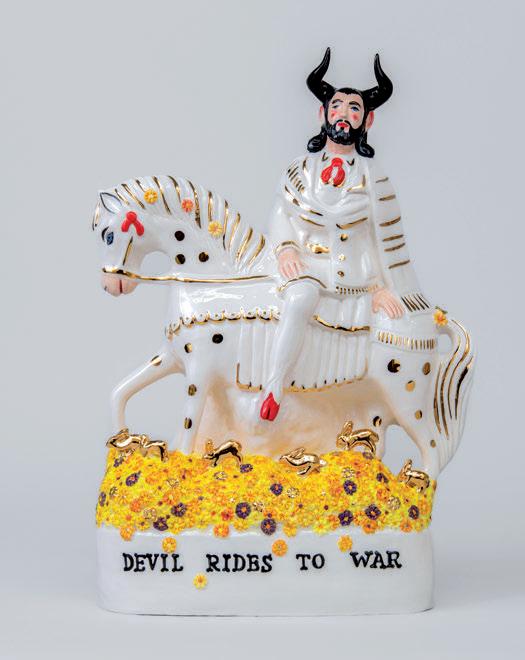


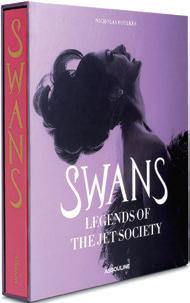






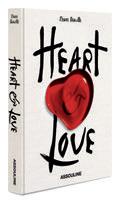
Gen Z might be the first fully digital generation, but it looks likes some are discovering that nothing feels, looks or reads as good as a real book. All hail the printed page, says Olivia Cole

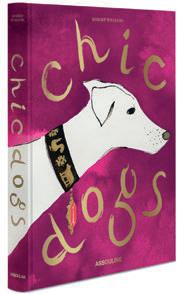
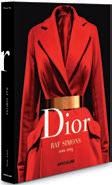

or all the pleasure they have given me, for years it’s been bruising to love books and bookshops. Barely a month went past without news of a beloved spot disappearing from the map. Everyone can name that favourite worldwithin-a-world they can’t believe isn’t there anymore. ‘You didn’t really imagine New York would have to do without those places,’ says designer, writer and expert library creator David Netto. He mourns the demise of his teenage favourite, Archivia, the architectural specialist bookshop, and the legendary Books and Company.
In London, this trend seemed typified by the demise of the Travel Bookshop in 2011. Along with other writers (and the even louder voice of Alec Baldwin) I campaigned for that one – if the most famous bookshop in the world couldn’t stay open, what chance did the rest of them stand? As a critic, it’s become second nature to gently remind people to buy from a physical bookshop if they can, or to bookmark the Bookshop.org website if they're online.
And yet, it’s possible that the bookshop as a romantic lost cause might now be a thing of the past. Generation Z may not have seen Nora Ephron’s You’ve Got Mail (1998), set when email was itself a novelty and the indie owner (Meg Ryan) is romanced by the baddie with the big chain of bookstores. They probably consider Notting Hill (1999), with Will’s struggling bookshop, a curiosity – not least because it was almost always empty. The new book lovers are too young to remember a world pre-internet and yet they seek out books like we might seek vinyl, to be cherished, and consider their bookshop a place to hang out in a way that passed by Kindle-clutching millennials. They don’t drink much, but they might have a glass of wine in a spot like BookBar on Blackstock Road, London N5 (there’s even a resident DJ, and a second location – in Chelsea –will open this spring) while they add to their collection of prized signed editions. Special as it is, this booming bookshop, bringing ‘people together through books’, is part of something wider and beautifully hopeful. In recent years, independent bookshops in the UK have reported startlingly good results. Foyles has reported an increase in revenue over the past year of 101 percent. After a 20-year decline, independent bookshops are now in a period of growth. How extraordinary that the digital natives should be the ones to drive this renewed appreciation of printed matter, and to find so many ways to connect meaningfully with themselves and each other, through books and book collecting. A great example is Kaia Gerber’s Library Science book club (co-founded with writer friend and former Teen Vogue assistant Alyssa Reeder), which recommends great ways to spend time offline. The pair talk about books and recommend new writing, as well as sharing their love for cult writers such as Joan Didion.
Whereas the ‘Books are my Bag’ campaign tried to swim against the tide with its slightly scruffy bag and slogan, now there are innumerable chic bookish accessories. At Maison Assouline, another of London’s most beautiful physical bookshops (designed by British designer Guy Oliver), as well as their books, analogue fans covet clutch bags by the Italian designer Maria Marigliano Caracciolo. They are indistinguishable from leather-bound volumes and can be
personalised to the specifications of her geeky, yet glamorous, jet-set clients. Alighieri Jewellery even celebrates the lowly pencil as a must-have accessory. Designer Rosh Mahtani has created a pendant pencil holder so that it can be worn on a chain to always catch your latest ideas or annotations. Dante (after whom the brand is named) forbid, you send yourself a text or a voice note.
Someone who has got to know this pencil-toting demographic well is Joanna Reynolds, chief executive of independent publisher The Folio Society. Their new customer base has expanded by a fifth. For the first time, customers under the age of 25 exceed those over 60. This generation, she believes, knows ‘the connection between reading and wellness’ and ‘values space and time away from screens’. And this seemingly very traditional British company is buoyant under her leadership, a digital presence being key to this – it has more than 250,000 followers on Instagram. Catch, if you can, Folio’s centenary edition of The Great Gatsby with its sumptuous new illustrations by Yuko Shimizu.
Bookshop.org
An online bookstore supporting independent bookshops.
Foyles
A renowned UK bookseller with a rich history. foyles.co.uk
Maison Assouline
A luxury bookshop and publisher known for its beautifully designed books. assouline.com
Peter Harrington A leading rare bookseller in London. peterharrington.co.uk
The Folio Society Publisher of high-quality illustrated editions. foliosociety.com
California International Antiquarian Book Fair
A major event for serious book collectors. abaa.org/cabookfair
Society of Illustrators Hosts exhibitions, including the upcoming celebration of The Great Gatsby societyillustrators.org
Library Science Book Club
Kaia Gerber’s Instagram-based book club with literary merch.
Alighieri Jewellery
Designer of literaryinspired jewellery, including the pencil pendant. alighieri.com
Maria Marigliano Caracciolo Designer of bookshaped luxury bags. bym.design
To this generation, agrees rare books and atlas expert Daniel Crouch, there’s no stigma to buying special multiples of printed material. For his young collectors, the iPhone put maps in everyone’s hands but also nurtured a connoisseurship for the real thing.
For serious young book collectors IRL, the Rare Books San Francisco fair is the book collector’s equivalent of Art Basel Miami Beach. Young collectors come from the worlds of tech, finance, and media with real passion and real money to spend. To specialist Dr Matt Wills (recently there with Peter Harrington’s annual stand), they ‘bring a lot of energy and enthusiasm to the collecting spirit’, from their interest in more diverse authors (witness their enthusiasm for Ursula Le Guin and Octavia E Butler) to the high standards of preservation for which they’re willing to pay. Popular areas include nostalgia books from their childhood, from those of Tolkien to the classically disaffected The Catcher in the Rye Frankenstein by Mary Shelley is a great example of a collectable title in demand, with an element of nostalgia but also a powerful contemporary resonance, as is Roald Dahl. ‘Our young collectors are quite plugged into the wider world in their careers, so this filters into their collecting,’ says Wills.
Harrington is a must-stop for the American interior designer Netto, who looks forward to a time when these young, impassioned collectors build libraries of their own. Books have been a leitmotif of his work for 20 years (as shown in his new book for Vendome), ‘because they are the most beautiful things in a room.’ He recently bought his college-age daughter, a big F Scott Fitzgerald fan, his short stories to treasure, a perfect gift because ‘rare books live with you as friends, for your whole life’.
Before my life as a journalist, my first jobs as a student gave me heady lessons in the magical power of book collecting. At USC, Columbia, I worked as a research assistant to the Scott Fitzgerald authority Professor Matthew J Bruccoli, who wrote the classic biography Some Sort of Epic Grandeur. Bruccoli built the largest collection of Scott Fitzgerald materials outside of the archive at Princeton and even owned a chaise longue that had belonged to Zelda Fitzgerald – even better, he let students (carefully) lounge on it in the true spirit of the flappers and philosophers.
Little wonder the total thrill and time travel of literary discovery – or of what you might turn up, whether in a legendary book dealership, a Mayfair auction house or even a sleepy branch of Oxfam – has never left me. ‘Back to literature’ says Library Science’s bestselling tote –I never left. n


FROM LEFT:
Data indices are helping collector’s gauge what their prized possessions, from Pokémon cards to fast cars, are worth; pre-loved Rolex Submariner Date 2002 in stainless steel, £10,700, available at the flagship store in Covent Garden and bucherer.com

Data is integral to collecting, shaping how we curate and manage our assets. Andrew Shirley unpicks the indices
‘My collection has gone up by another 20 percent.’ It sounds like the kind of statement you’d hear from a seasoned investor tracking the performance of their investment portfolio. In fact, it’s my 12-year-old son trying to justify the pocket money he’s spent funding his collection of Pokémon cards.
YOU CAN INSTANTLY SEE WHETHER THAT ROLEX SUBMARINER DATE YOU’RE TEMPTED BY IS PRICED FAIRLY

Sadly, he’s not quite a collecting-card millionaire yet – his most valuable card is only worth about 20 quid – but he’s not wrong; the value of his modest collection has increased by 20 percent. He has the data to prove it. All his cards are logged on an app tracking the sale of Pokémon cards on eBay, which instantly updates the value of his portfolio when one of the cards he owns is traded. It sounds like overkill for a kid’s hobby, until you realise that the rarest cards can fetch millions.
My son’s data obsession highlights a trend that has developed over the past decade, the growing focus on the investment side of the equation, particularly with younger collectors.
Each year, in a former role as editor of The Wealth Report published by Knight Frank, I surveyed global wealth advisors about their clients’ activities and investments. One of the questions concerned the motivations behind their collecting activities. All told, the primary motivation was ‘joy of ownership’, but over the years ‘return on investment’ started to catch up. For respondents from Asia, whose wealthy clients tended to be younger, it took the lead several years ago. In part, that reflects a more transactional society, but part of the shift lies in the greater access to value data that the internet provides, my son’s Pokémon app being just one example.
Value data depends on the quality of the inputs (which can include auctions, private sales and professional valuations). The higher transaction volumes in areas such as watches and wine are always going to offer more stable, dependable results than smaller markets, though factors such as condition are relevant. Those Pokémon cards can only be accurately valued once professionally graded. A card, even a very rare one, awarded condition 1 is worth far less than one achieving an elusive 10, which not even cards straight out of the pack are guaranteed to score.
Each sector has its own quirks, meaning that many data sources online are highly specialised. Art Market Research, for example, produces a range of indices covering a host of collectables, including works of art, jewellery, furniture and even handbags. Subdial and Chrono24 offer indices that focus purely on watch values, transforming the secondary market in the process – you can instantly see whether that Rolex Submariner Date you’re tempted by is priced fairly.
Cars are well catered for with the Historic Automobile Group International (HAGI), insurer Hagerty and car dealer Kidston all producing their own indices; Rare Whisky 101, Liv-ex, Wine Owners and Cult Wines are just some of the sources for alcohol collectors. Although these indices indicate the broad direction of travel for a particular asset class, anybody using them as an investment guide needs to understand what they’re tracking. Take HAGI, for instance: its index records the performance of about 50 of the world’s most desirable investment-grade cars, so it’s not a great guide to the value of your old MG or Austin 7.
Where there isn’t data for specific assets, such as a single artwork, indices can still be used to follow the rise or fall of specific artists and genres, highlighting areas worth looking at – female surrealists such as Dora Carrington are having a moment right now – but the lower volumes mean the numbers need treating with more caution. Even the most feted artists have their off days at auction, so don’t rely solely on past performance. And finally, no index includes the costs of ownership – storage, insurance, maintenance – or buying and selling fees, which can be substantial at auction. I have a feeling my son’s 20 percent bonanza would quickly melt away if he tried selling his prized collection. But if you buy what you love and what makes you happy, then you’ll have made the best investment of all. n






























If classic cars is a man’s world de ned by conversations on understeer, dog-leg gearboxes and ‘red lining’ in third, the scientist and entrepreneur Cici Muldoon is air-cooled freshness personi ed, says Simon de Burton


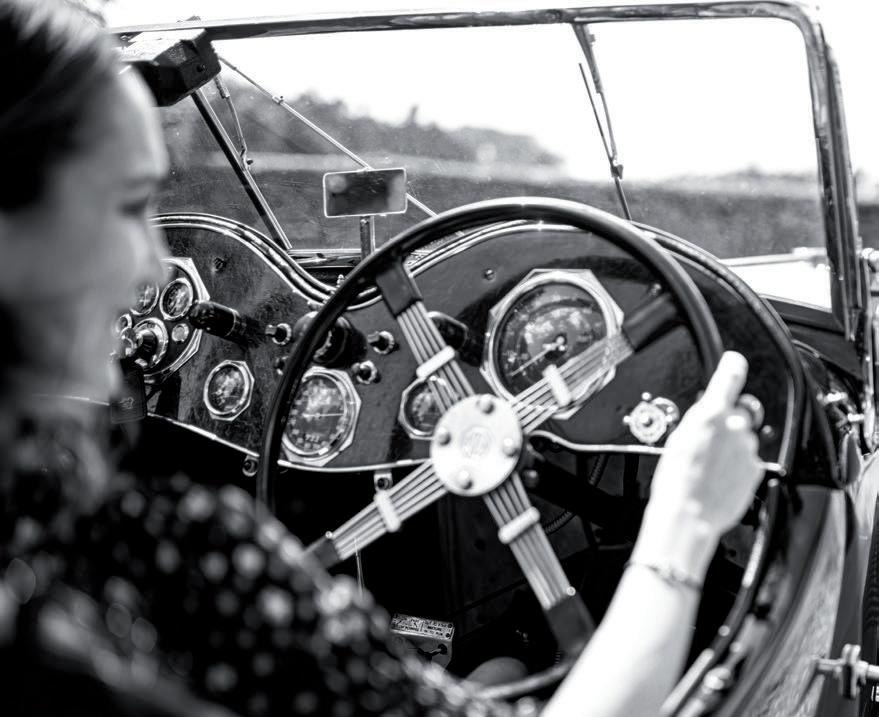



‘I





USED TO WANDER AROUND MAKING NOTES ABOUT THE CARS AND TAKING PHOTOGRAPHS OF THE DETAILS AND, ONE DAY, SOMEONE SAID “WHY DON’T YOU BECOME A CONCOURS JUDGE?”’

ici Muldoon probably knows as much or more about the history, provenance and workings of old cars than anyone on the classic car circuit, male or female, not least because she’s been immersed in the world from her childhood. Her father, the well-known Ferrari collector Jaime Muldoon, rst took his daughter to the renowned Pebble Beach event in 1987 when she was just three years old, and she has been a xture of the historic automobile scene ever since. But the Mexicanborn, UK-based motoring enthusiast is more than a mere spectator, both when it comes to cars and to her life outside them – she brings her own accomplishments to what is a high-octane world: alongside a degree in physics and nance from Princeton, Muldoon is a scientist and entrepreneur with a PhD in experimental atomic and laser physics from the University of Oxford, and has a diploma from the Wine & Spirit Education Trust. She’s also an accomplished amateur ballerina.
It was only in her early thirties that her true passion for cars was sparked, despite having grown-up around her father’s collection and having been ‘dragged along’ to countless events with her godfather, Giuseppe Risi, founder of the recently disbanded Risi Competizione – the most successful US-based Ferrari and Maserati GT racing team in history.
‘I came to Oxford in my early twenties and started going to a car club called the Oxford University Motor Sports Foundation,’ she says. ‘My PhD was in experimental physics, so I’m mechanically minded and I realised that the things I like most about cars are their engines. I’ve been involved in dismantling and rebuilding a few – a Bristol straight six, a Jaguar XJ and an MGA 1600 – and I’ve always really enjoyed understanding how everything works.’
It’s good that Muldoon is handy with the spanners given that, since acquiring her rst classic about a decade ago, she has amassed a stable of six with a combined age of more than 330 years.
‘ e rst one was my 1955 Triumph TR3, which I still own. en there’s a 1934 MG PA, which I use for puttering o to the pub; a 1960 one-o Ferrari 250 GT PF, which was built with a competition engine for Swiss hill climb champion Willy Daetwyler. And there’s a 1965 MGB race car that I’m hoping to use on track this season.
‘But probably my favourite car is my 1974 Ferrari 246 GTS “Dino”. It’s in its original colour of Viola Metallizzato and was tted with Ferrari Daytona seats from new.’ (Muldoon also owns a 1972 Daytona – but it’s up for sale so it doesn’t count – and is awaiting receipt of a Mercedes-Benz 500 SLC and a Ferrari 330 GTC.) For day-to-day use, Muldoon relies on a ‘modern’, in the form of a BMW M2 ‘Competition’ coupé; she became the rst
person to own a 650 horsepower Glickenhaus SCG 004S, but parted with it after nding it impractical for British roads. ‘I am a long-standing friend of Jim Glickenhaus [movie industry tycoon, car collector and founder of niche supercar manufacturer and race team Scuderia Cameron Glickenhaus] and decided to buy the rst 004S road car,’ says Muldoon. ‘It was nished in gold paint with gira e-patterned upholstery, and the rst time I drove it was when I took it up the hill at the Goodwood Festival of Speed in 2021. It was nerve-wracking.’
However, Muldoon’s favourite moments behind the wheel have been on ‘pleasure rallies’, often with her mother as navigator. ‘My mom gets us lost, which can be fun,’ she says. However, her full immersion into the classic car world came as a result of attending concours events around the world, notably California’s Pebble Beach and the Villa d’Este in Lake Como. ‘I used to wander around making notes about the cars and taking photographs of the details, and one day someone said, “Why don’t you become a concours judge?”’ Muldoon put herself forward and soon became a regular member of the judging panels at many of the world’s most prestigious shows, including Pebble Beach, the Cavallino Classic in Palm Beach, the Chantilly in France, Le Zoute in Belgium and the ICE in St Moritz. ‘I’ve always enjoyed the deep dive into the details of each car and having to use detective work to decide what’s right and what’s wrong,’ she says, referring to the minute details concours judges examine to determine a car’s originality and ‘correctness’.
Lately, however, Muldoon has been forced to relegate that aspect of her passion to the back seat in favour of focusing on her work as the founder and CEO of Serox, an Oxfordshire-based medical diagnostics company developing a ground-breaking method of identifying cancer. Its non-invasive ‘disease agnostic’ approach analyses urine samples using a multi-test cartridge system that makes it possible for the presence of cancer to be eliminated in a matter of minutes without the need for more lengthy, more expensive procedures.
Established in 2022 and now operating with a team of 18, Serox is on track for FDA approval in the US and could prove to be game-changing in the eld of cancer diagnosis. Despite it being a more than full-time job, Muldoon hasn’t forsaken the world of wheels completely.
‘Although I’ve reduced my judging commitments, I’m still on the steering committee for the Hampton Court Concours of Elegance – and I’m very involved with a small, private car club.’ With around 50 members, the club organises weekend jaunts to di erent parts of the country. ‘Most members have modern supercars but I take the opportunity to drive one of my old ones. I might not be the rst to arrive, but I probably have the most fun.’













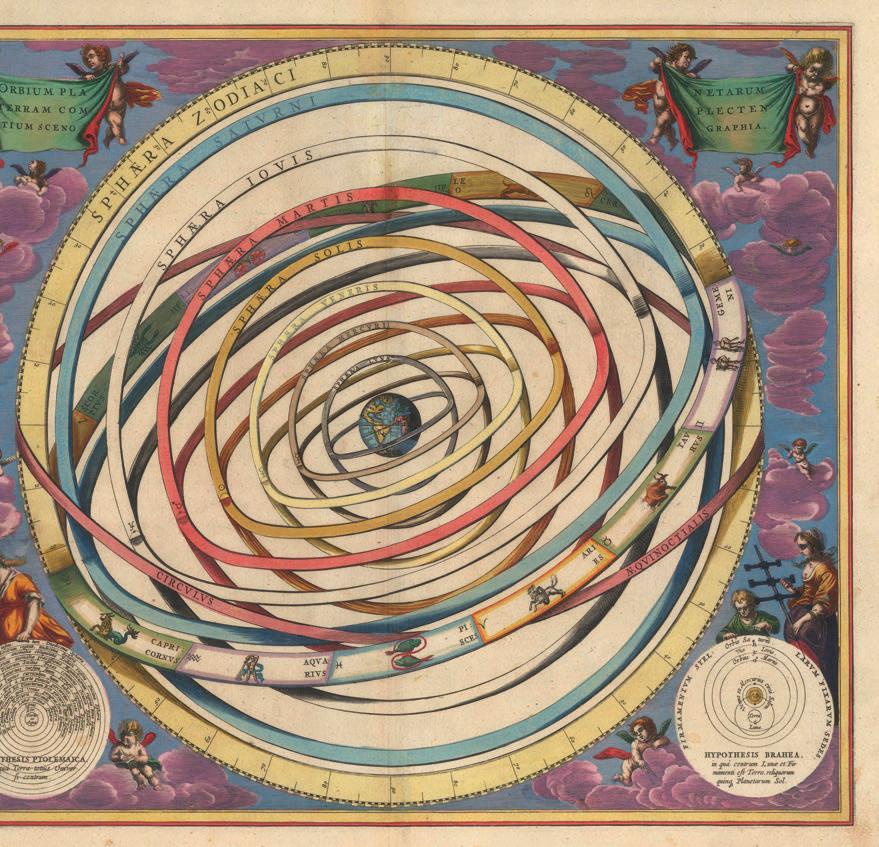



















Helen Sunderland-Cohen is the custodian of a unique map collection begun by her father, which she believes should be shared as widely as possible, says Andrew Shirley
ost of us probably have a few magazines, newspapers or paperbacks lying around on our kitchen or dining room tables. Helen Sunderland-Cohen’s are laden with some of the world’s oldest and rarest reference books and atlases.
The weight of history hangs in the air. ‘The maps aren’t just about geography. They reflect the world’s changing geopolitics and religious attitudes over the centuries. They are about power, wealth and who has wielded it,’ Sunderland-Cohen tells me.
I keep my distance. The books, some exquisitely illustrated by hand, are irreplaceable and worth hundreds of thousands, if not millions, of pounds. With a cup of tea in my hand, I’m not taking any risks.
But despite their importance, Sunderland-Cohen – a lawyer by trade – says the books can be enjoyed as intended, albeit carefully, as she expertly turns their pages –ungloved, to my surprise – to show me some of her favourite maps. ‘Even the finest gloves can catch and tear delicate paper, so it’s actually best not to wear any,’ she says.
Of course, the books don’t usually lie around her apartment, which overlooks a leafy Westminster garden square, and also houses a carefully curated collection of modern art and photography. But the fact she’s brought them here to show me typifies her approach to making The Sunderland Collection, which her father Dr Neil Sunderland founded about 40 years ago, as accessible as possible. ‘The collection was growing and contained all these rare maps and important atlases, but something was missing,’ she says. ‘Nobody else even knew it existed.’
The collection, which includes more than 140 world maps, celestial maps, globes and books from about 1200 to the early 1800s, could have gone into a private museum, but Sunderland-Cohen was wary. ‘We thought about it, but museums are expensive, and I saw the impact of Covid on them and their staff.’ She says she loves to collaborate rather than trying to do everything independently. ‘You can use your resources carefully but in a variety of different ways, which means you can reach more people for less.’
has been amazing. I knew the collection was good, but I didn’t really know what to expect when we opened it up,’ she says.
Sunderland-Cohen needn’t have worried. ‘To be in the US Library of Congress or the British Library, talking to the world’s top experts and seeing them get excited about your maps is pretty special. I have met so many interesting people, and everybody has been so kind and generous.’
However, Oc uli Mundi is just part of opening up The Sunderland Collection. There have been pop-up events and conferences, ‘such a great way to get people together’, while items from the collection are often lent to other exhibitions.
Sunderland-Cohen is especially excited about the loan of eight atlases to the Sainsbury Centre’s upcoming investigative exhibition A World of Water? ‘I just love being able to support what others are doing.’

‘THE MAPS AREN’T JUST ABOUT GEOGRAPHY. THEY REFLECT THE WORLD’S CHANGING GEOPOLITICS AND RELIGIOUS ATTITUDES OVER THE CENTURIES. THEY ARE ABOUT POWER, WEALTH AND WHO HAS WIELDED IT’
Oc uli Mundi (Latin for eyes of the world), a sumptuously designed website that allows the curious and connoisseur alike to interact with a high-resolution digitised version of the collection, lies at the heart of Sunderland-Cohen’s accessibility strategy. As well as providing a unique resource for the public and scholars, she says the benefits to her as the collection’s custodian have been huge. ‘I now know much more about the maps. As part of the digitisation process, we did a lot more in-depth research into each of them: who paid for them, who printed them, how they were printed. It’s all so fascinating.’
But seeing other people engaging with the material is what she’s found most rewarding. ‘Whether it’s children when we are doing educational outreach or other collectors and academics, the reaction
A podcast series, What’s Your Map?, where leading cartography lovers talk about their favourite maps, is on its second series with a third in the pipeline. Last year, she launched The Sunderland Collection Art Programme, curated by contemporary art expert Beth Greenacre. The second edition, culminating in an exhibition of new works by Canadian artist Kristina Chan inspired by objects from the collection, is on display at Canada House Gallery in Trafalgar Square until 30 April [2025], and can be found on the Oculi Mundi website.
As well as broadening the collection’s reach, collaborating with like-minded partners can have more material benefits, says Sunderland-Cohen. She has, for example, worked with a print master to create limited-edition handprinted copies of one of the collection’s maps, Berlinghieri’s 1482 Geographia. ‘It’s printed on Fabriano paper, which can trace its origins back to 1264 and would have been used for the Geographia.’
A keen supporter of traditional craftsmanship (she is a trustee of the City & Guilds of London Art School), Sunderland-Cohen was also delighted when the contemporary jewellery-maker Francesca Grima, daughter of the pioneering designers Andrew Grima and Jojo Grima, agreed to work together on a range of individually handcrafted jewels inspired by the collection. ‘They completely got it.’
However, she’s keen to stress that profit isn’t the objective of such partnerships. ‘We are very ambitious about what we are doing with the collection, but that can be expensive,’ she says. ‘Ensuring it has the means to survive as a single unit is also crucial.’
Su nderland-Cohen’s passion for the collection that she safeguards is palpable. When it’s time to drag myself reluctantly away from the spellbinding atlases she’s laid out, I ask if she has any further plans to make her collection even more accessible. ‘I’m only getting started,’ she says, laughing. ‘The journey has just begun.’
Visit The Sunderland Collection at oculi-mundi.com n




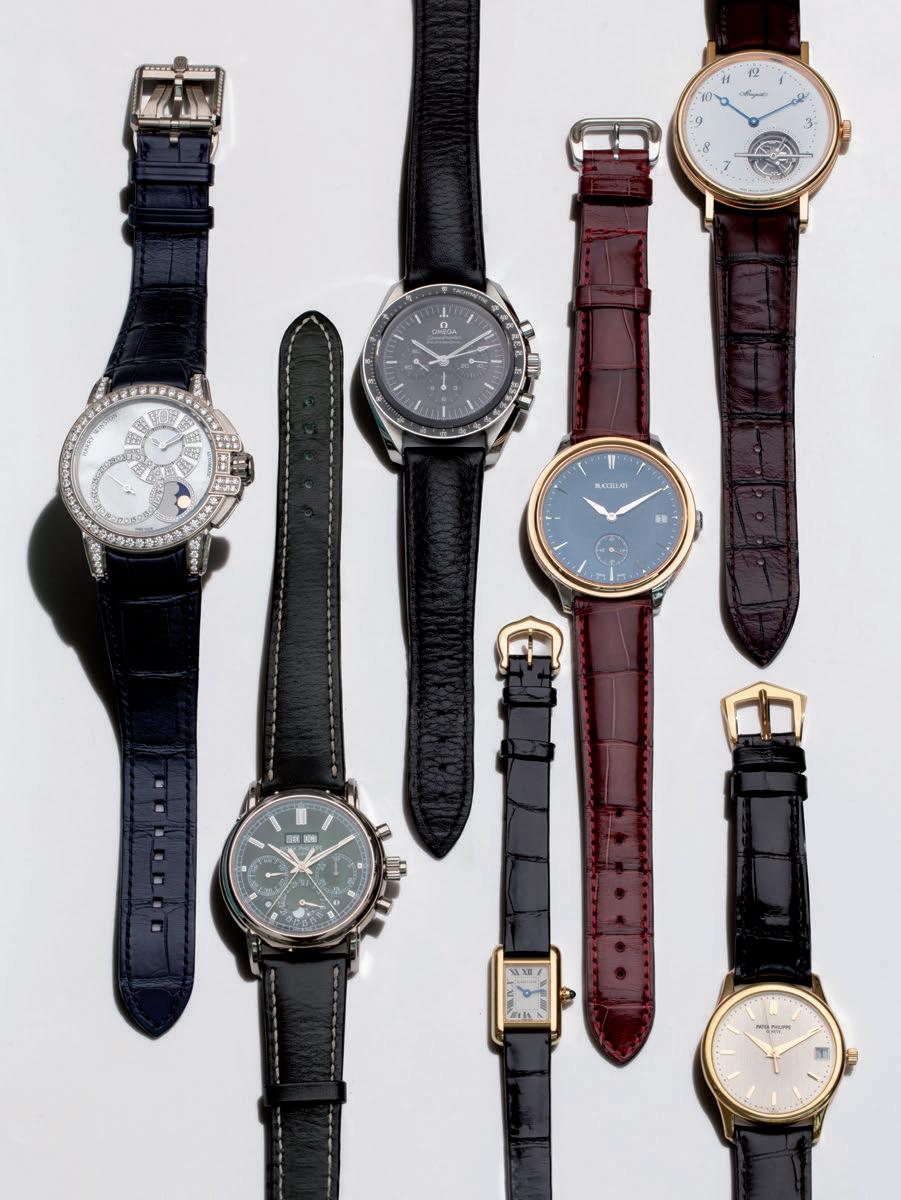

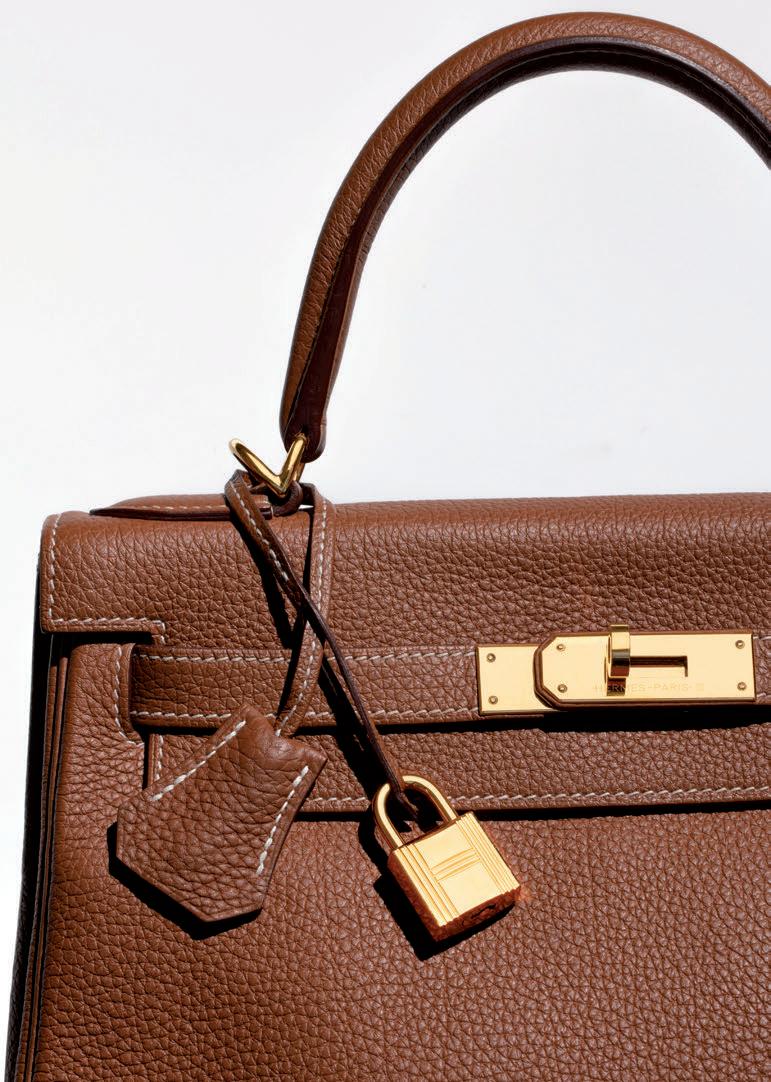

CLOCKWISE FROM LEFT: Hennessy Paradis
Rare Cognac House of Hazelwood The Garden at Hazelwood 47 Year
Old Longmorn 30 Year
Old Livingstone The Leads King Duncan from The Macbeth Collection
Daftmill 15-Year-Old Fife
Strength


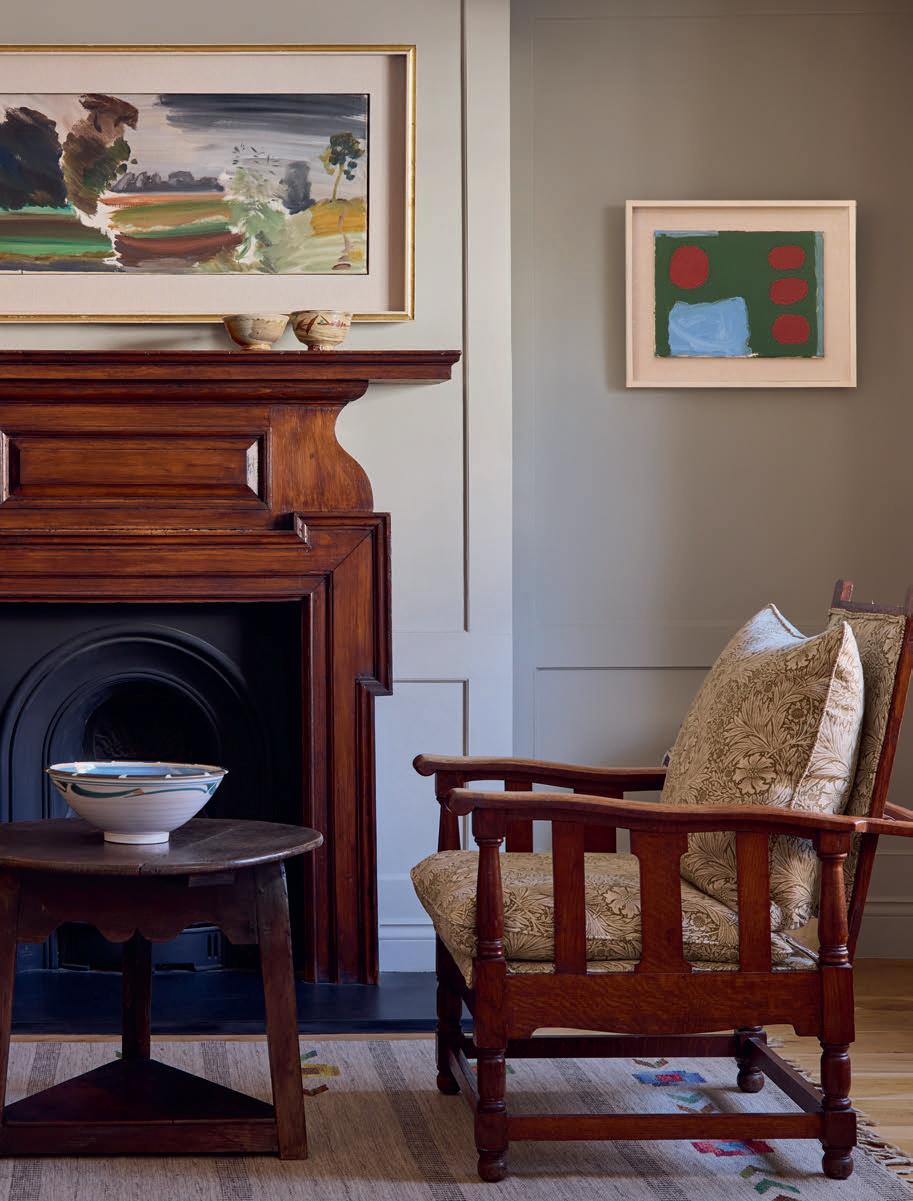

The leading international art lighting specialist, transforming works of art for Great British Treasure Houses, Galleries & Museums, Private Collections and your home.



thanks to a heady cocktail of optics, energy, provenance and passion. James Gurney meets three of London’s leading collector-jewellers
ewellery collectors often morph into gemstone collectors, I learned when sitting down with Sophia Hirsh. The managing director of Hirsh has a reputation for creating pieces that pop with colour and character, thanks to a focus on rare gemstones, including flashing opals, colour-changing alexandrites, spinels, and tourmalines – stones that are sought out from sources around the world.
It takes the passion of a true collector and, as the Mayfair jeweller recounts, her journey into gemstones began in childhood. ‘My grandfather started me on this little mineral-collecting habit. I spent many summers in the Great Lakes in Michigan where you can find Petoskey stones, which start out grey, but in water reveal that they are fossils with the most beautiful patterns, and I had a knack for finding them.’
For most people, the fascination starts by buying jewellery and then they find their interest begins to focus on the stones themselves. ‘So you might see a beautiful blue diamond that could be made into a jewel, something unique and special to you,’ says Hirsh. ‘From there, you might build a collection of loose gemstones with the intention of enjoying them one day. But those stones are also an asset, part of a diverse portfolio. Just as people invest in art and rotate their collection, displaying only certain pieces at a time, the same applies to gems. You can transform them and, as tastes change, switch a stone from, say, a simple solitaire pendant to a fantasy bangle.’ Hirsh has just transformed a ruby suite – which had belonged to the same family for over a hundred years – for a new generation.
‘It’s a great joy for me because I love that these stones are part of the Earth’s core, part of what this planet is,’ Hirsh says. ‘Long after we’re gone, they’ll still be here, just like the jewels in the Tutankhamun

Sophia Hirsh
exhibition, which are as beautiful now as they were millennia ago.’ Hirsh is well known for its rare stones, and Sophia and her husband, Jason, travel the globe in search of special gems, visiting dealers, mines and shows on every continent. ‘Some stones are incredibly rare, others come from mines that have closed. We have always worked extensively with pink diamonds from the now-closed Argyle Mine. In our early days, in the 80s, people were mainly looking at white diamonds, but we sought out colour: yellow, pink, green, orange, even brown diamonds, and, of course, the blues.’ Hirsh also sourced a couple of red diamonds over the years. ‘In hindsight, we shouldn’t have sold them – but part of the pleasure is creating something beautiful and sending it to a permanent home.’
That certain stones have an energy to them is a given for Hirsh. ‘One client – a former prisoner of war in Burma, who worked on the infamous railway – carried a Burmese ruby in his pocket as a worry stone throughout his life. He believed it had an incredible energy that spurred him on – he was very successful in life.
‘I can look at a tray of 50 sapphires and immediately spot the one that talks to me with that energy. And the way we work means we don’t have to adhere to the constraints of CAD designs and can respond to each stone’s character.’
Hirsh shows me a stone that shifts from dark green to a delicious purply red as you move it in the light. ‘We’re finding that collectors are more appreciative of rarity and less afraid of difference. Why choose a white diamond, whatever the size, when you could have an amazing Brazilian alexandrite with a perfect colour-change? It’s far rarer and very few people will know what it is.’ Similarly, chameleon diamonds change from, say, a vibrant orange to green depending on how long they’ve been in the light. ‘As I say to
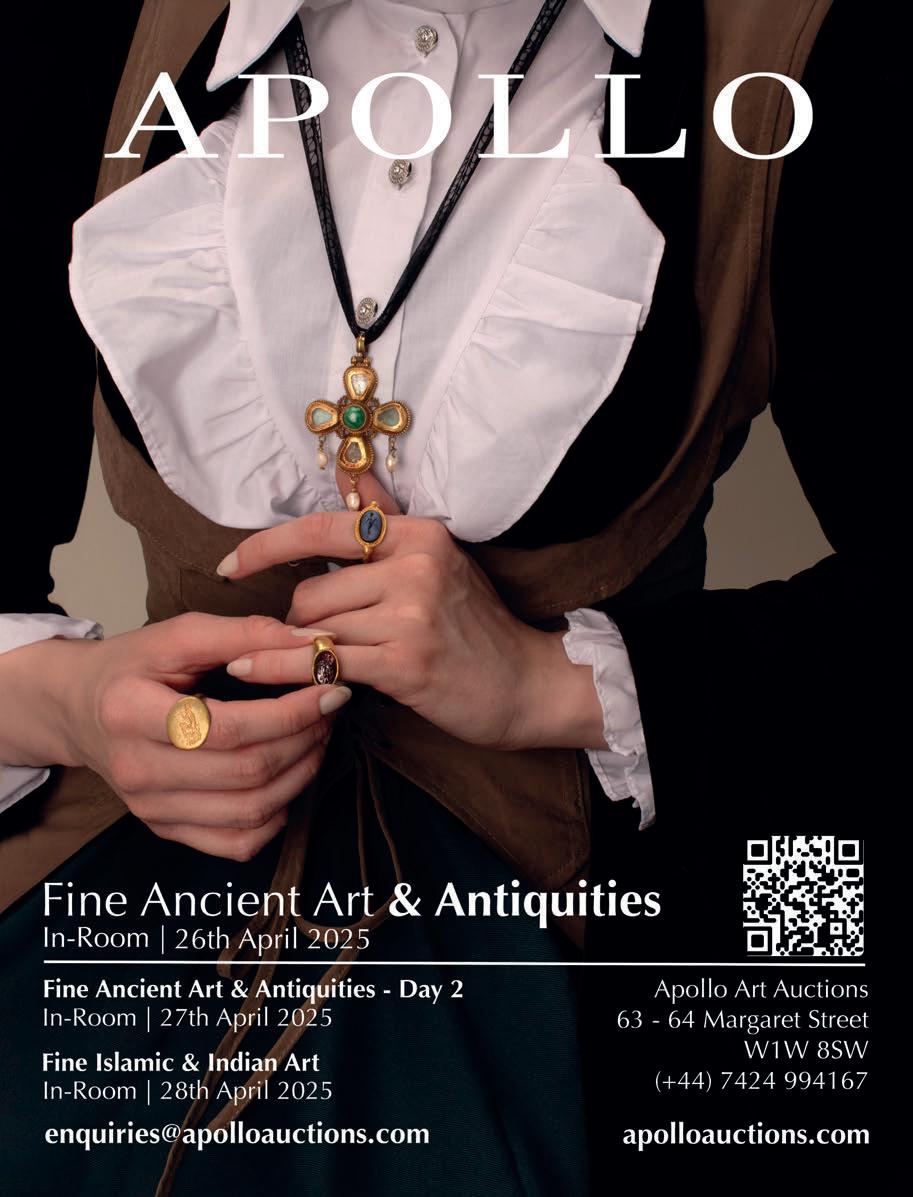
everyone, start with something you love and connect with; then, have fun with the setting. Create something unique.’
Any conversation around rare stones must include Kashmir sapphires, according to Guy Burton, managing director of Hancocks.
‘The rarity and intrinsic quality of Kashmir sapphires, along with their historical significance, drive their value,’ he says. ‘ These are from mines that are long exhausted and with most stones being antique, they command premium prices thanks to their phenomenal rarity.’
It’s a similar story with Colombian Muzo emeralds. ‘While they are still mining there, the older stones have a richer, deeper colour,’ Burton says. ‘And pigeon-blood Burmese rubies, along with the Kashmir sapphires, still have the strongest trajectory in terms of prices.’
Collectors are naturally very keen on proper certification and provenance to go with the stones, while the setting adds to the credibility of the provenance; if it comes from a renowned name, such as Cartier, that only adds to the value. As for rarer minerals, ‘it’s harder to quantify, as they are so rare’, says Burton. ‘But if you have a Ural Mountains alexandrite with really good colour change, there will be huge interest. It is the colour change that’s the most important, so very fine Sri Lankan stones also command strong interest.’


Tourmalines, he says, are going for crazy money, and black opals from Lightning Ridge in New South Wales ‘have had a huge kick in value, so that’s probably a slightly riskier prospect. Spinels seem undervalued at the moment given the beauty of the stones – there’s growing interest but not in the same way as for tourmalines.’

Another jeweller to emphasise the importance of ‘energy’, that elusive combination of physics and history, is Krishna Choudhary, founder of Santi in Mayfair and scion of a Rajasthani family that rose to prominence with the Rajputs in the 18th century, whose court cultures were a synthesis of Persian and Moghul influences.
Choudhary’s family held positions under the Maharajah that included responsibility for the jewellery at court, an interest passed down through ten generations and reflected in a collection acquired over the centuries that would grace any museum. Choudhary reinforced this inheritance with studies in art history and gemmology, and has forged a stellar reputation as a jeweller uniquely placed to mix ancient and modern.
The 15 to 20 new designs that Santi produces each year feature historical stones such as spinels, sapphires and diamonds from the Golconda mines, stones that Choudhary believes have a special value.
‘It’s a big responsibility to use the historical stones and do them justice,’ he says. ‘This is why it could take me many years to find the right design for these special gems.’
Santi’s designs often feature elements of traditional design executed in a contemporary style, with his clients valuing the way its jewellery respects the heritage of the stones used. ‘Santi clients appreciate being educated about historical stones and value the evolved narrative given to these when set in contemporary designs,’ Choudhary says. ‘We hope our pieces spark conversations between jewellery connoisseurs and enthusiasts, bridging the gap between expert knowledge and the passion of modern collectors.’ n
‘IT’S A BIG RESPONSIBILITY TO USE THE HISTORICAL STONES AND DO THEM JUSTICE. IT COULD TAKE ME MANY YEARS TO FIND THE RIGHT DESIGN’

The Beta 21 was a false dawn for the Swiss watch industry, but these early timepieces are now highly sought-after, says James Gurney

Quartz watches don’t usually go down well with collectors for a host of reasons. Not least of which is the near-terminal decline quartz’s advent set off in the Swiss watch industry. Apart from being unfair (the strength of the Swiss Franc did most of the damage), it meant some amazing designs languished without the love they deserved. Now, a half-century after the first quartz watches appeared, and thanks to the revival of early models such as Girard Perregaux’s Laureato, collector interest is growing fast.
Switzerland’s first quartz movement was the product of a unique cross-industry scheme – known as the Neuchâtel Project and involving about 20 of the biggest watch maisons, including Piaget, Patek Philippe and Omega – to design and produce a workable electronic watch. The idea behind the technology was decades old but it was only in the 1960s that small-enough transistors became available to make it viable for a wristwatch. The first prototype, Beta 1, was ready in 1966, but internal disagreements meant the eventual production movement, Beta 21, didn’t appear until 1970.
One of the biggest challenges was keeping the size down: Beta 21 was a beast by contemporary standards, measuring 30.9mm by 26.5mm; most watch movements at the time were under 24mm, ultra-slim and sometimes forgettable. Designers had to develop radically different looks for the bigger movements and – given they were also expensive and ushering in new technology – this provided even more impetus for the brands involved to make a statement. Most chose to lean into the size using chunky rectangular or asymmetric cases (Rolex was one of the few to use a classic round case) and premium materials such as stone dials and gold; even Rado rose to a lapis lazuli dial for its watch. This design era coincided with the arrival of the Space Age, crowned by the success of the Apollo programme – a futuristic 1960s style is a visible influence.
The combination of a new aesthetic and larger cases quickly caught on beyond the Beta 21 project, the inevitable minimalist reaction only taking hold with the arrival of mass-market (and much smaller) quartz movements later in the 1970s. About 6,000 Beta 21 movements were produced in total and allocated to the 20 maisons based on their contribution to the project, a limitation that makes these singularly big and brash watches ever-more sought after. n
A fifth of the UK’s women now consider themselves to be collectors. So where can the curious woman start – or go – with numismatics?
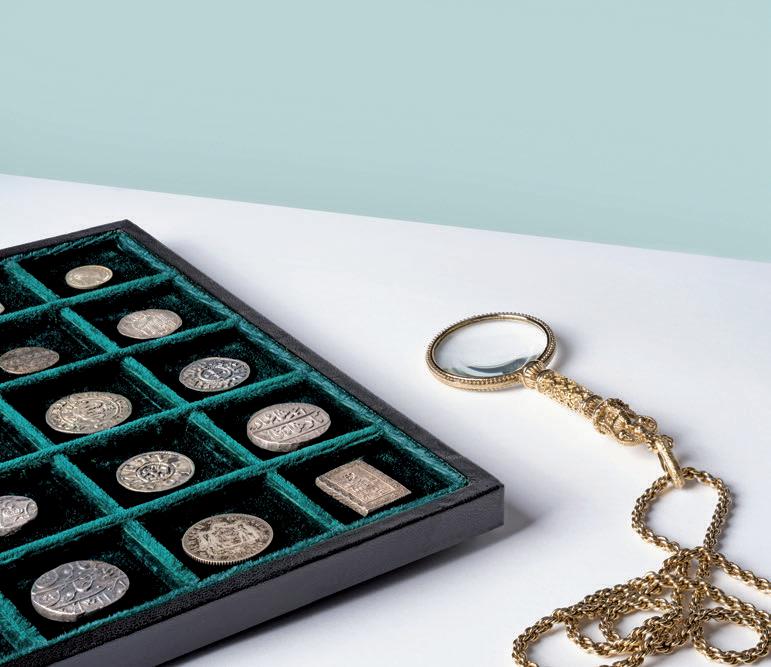
For centuries, coin collecting – or its official name numismatics – has been ‘the hobby of kings’. Many famous Renaissance rulers – including Maximilian I, Holy Roman Emperor and L orenzo de’ Medici –collected coins, a pursuit of elegance, history and tangible value. But this time-honoured hobby is no longer the sole preserve of royalty and Classics graduates. Today’s collectors include a growing number of women who are enamoured by both the artistry and historical significance of numismatics.
‘The historical coins of substantial numismatic value are becoming more and more attractive to women because of the connection with other forms of art,’ says Ema Sikic, World Coins Specialist at Stanley Gibbons Baldwin’s. ‘Established female collectors of artworks such as paintings and sculpture will surely consider coins at some point as well.’
So where to start? Sikic has some ideas. ‘Any sort of portrait coins with symbolism or charged political
meaning is a good place to start; collecting silver Roman denari according to the development of elaborate hairstyles of Roman Empresses is very popular.’ Beyond this, it’s a chance of unique historical insight. ‘We know of the appearance of some Roman Emperors only from their likeness on coins.’
Coin-collecting has endured for centuries, which, points out Sikic, cannot be said of many other hobbies: ‘And many of my collectors started in their early childhood.’ Indeed, coin-collecting is a great way to introduce young ones to the joys of finding a passion. ‘It’s a great way to make learning about history fun,’ she says. ‘At Baldwin’s we always keep a few trays and boxes of child-friendly coins. We look forward to families coming in, especially when our mini-collectors make their first ever purchase.’

Explore the collection today and take your place among history’s most esteemed collectors. Visit Baldwin’s to let them guide you on your journey. Quote C&TH for an exclusive 10 percent discount. sgbaldwins.com





For centuries, the West has drawn distinctions between fine art and craft – one elevated, the other functional. But history tells a more nuanced story, where the boundaries between artist and artisan are not so clear cut, says Nazy Vassegh
In the West, we are told, the delineation between art and craft was clear for hundreds of years. Craftsmen made things with practical use: furniture, vessels, pots. Fine art was for art’s sake, hung on walls or placed on pedestals. Art was ‘high’, craft was ‘low’. Artists were creative geniuses, while master craftsmen were still tradesmen.
Upon closer inspection, the boundaries become more blurred. The most famous bronzes of Roman or Renaissance times were cast by hands other than the artist’s – it was craftsmen who made the pieces. In the East, things were different. Beauty could lie in the curve of a vase or the line of an ink drawing.
Slowly, in the West, fine artists became makers. Picasso, as in many key moments of art history, was a pioneer in this crossover. In 1946, he first visited Vallauris, a small town in southern France specialising in ceramics. His fascination with the process began a lifelong passion for decorating plates, bowls, and vessels with his trademark iconography of bulls and fawns. That these are works of art is now undisputed but they are also examples of the town’s age-old craft.
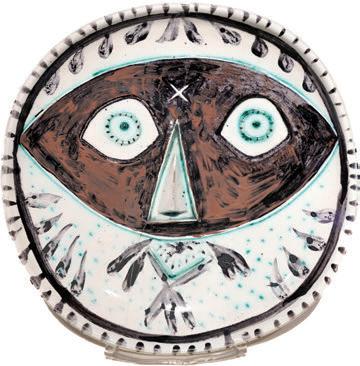
Les Lalanne, the husband-and-wife artistic powerhouse, also blurred the lines, using techniques such as casting and welding to create works of great artistic integrity, moving the decorative into the realms of artistic fantasy. Most pieces had a practical use, which made them even more engaging. The idea of serving drinks from a work of art or lounging on one was liberating. Some of these pieces now fetch millions, adding zeros to the value of objects that might otherwise have been considered ‘design’ or ‘crafty’.
The question of where the line lay between high art and functionality was central to the works of two of Picasso’s contemporaries. Diego Giacometti, brother of Alberto, was interested in how sculptural elements could be assimilated into the design of everyday objects. His artworks, cast in bronze (which was normally the preserve of fine artists), became the legs of a coffee table or the upright of a floor lamp. Although functional in nature, these objects were imbued with personality: a cast bronze hand emerging from the wall holds a light fitting, while table legs are adorned with lion’s heads, ostriches and even toads.
NOWADAYS, THE QUESTION IS OFTEN AS SIMPLE AS, ‘WHAT WOULD I LIKE TO LIVE WITH?’


There is something reassuring about knowing that an object speaks to a past of tradition, family and nature – symbols of what has been handed down from generation to generation. In times of uncertainty, this is something we crave. When a piece of fallen oak is carved into a vessel by Ash & Plumb, something magical happens. The craft is the art and the artist is arguably Mother Nature. Some artists go further. Alighiero Boetti employed an entire village of female carpet makers in Afghanistan to create his everchanging tapestries of the world. Teresa Hastings, represented by Sarah Myerscough Gallery, supports a studio in the foothills of the Himalayas, where villagers help source specific herds of sheep to hand-dye and weave wool into the yarns that form her monumental wall hangings. From sheep in a remote mountain to a gallery, via one hand, so to speak.
Joana Vasconcelos’ work is intertwined with the craft of lacemaking in rural Portugal. Together with a team of women, she creates woven sculptural works that are both contemporary in conception and traditional in their handcrafted execution. It is an artistic celebration of craft. Ai Weiwei takes symbols of Chinese craft – the Han dynasty pot or the Ming dynasty chair – and makes them the subject of his artistic practice, exploring and juxtaposing their relationship with today’s culture to highlight restricted freedoms and cultural concerns.
It seems clear that the relationship between art and craft is not as black and white as often portrayed. In the East, for centuries craft itself has been accepted as an art form. In Japan, the highest craft practitioners reach an almost god-like status, worthy of reverence and adoration. The ability to make the most beautiful so simply is the ultimate art. In the West, the narrative has favoured the artist, likely because of who historically determined the market. One imagines the Duke of Burlington would have patronised an artist over a tradesman.
The truth is that in creative endeavours, the artist needs the craftsman and craftsmen supply the artists. Sometimes, the craftsman is an artist; often, the finest artists are also master craftsmen. Maybe the answer is to ponder less and look more. When you gaze upon – or, if lucky enough, live with – an object that brings you joy or stirs an emotion, rejoice in it, wherever it has come from. For surely, that is the point. n
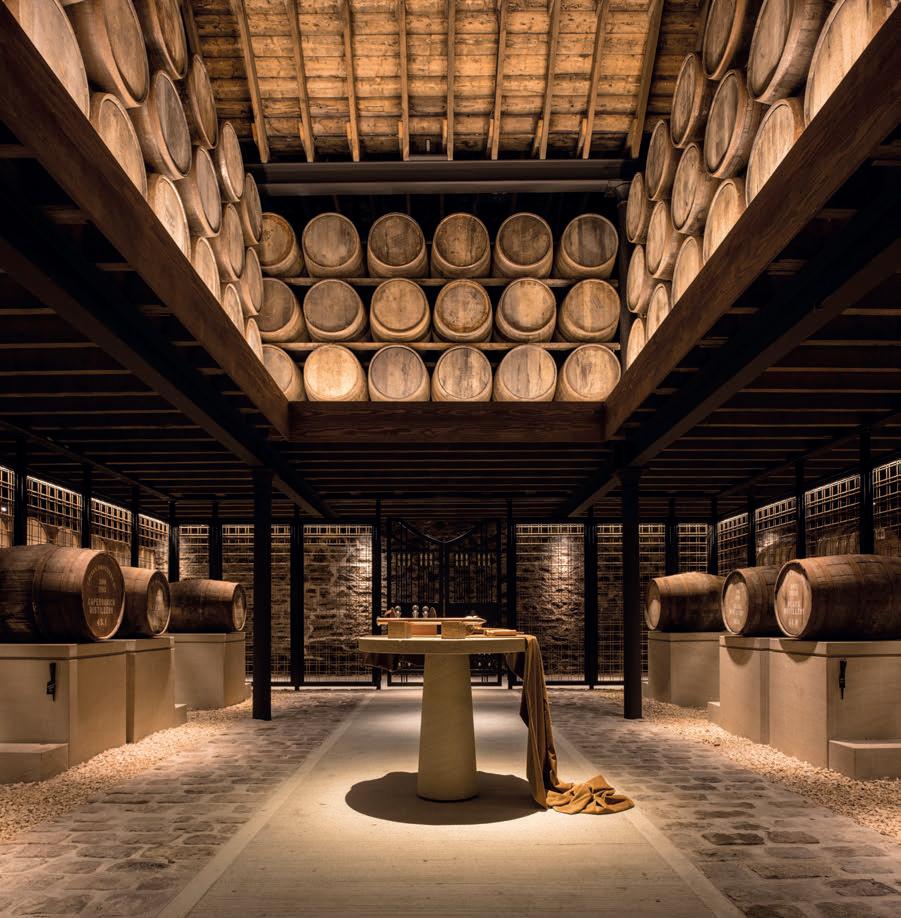
Chivas Brothers has launched an immersive and ultra-special tasting journey at its iconic Strathisla Distillery, offering a select few whisky lovers the chance to sample and own rare and limited-edition casks from its world-renowned portfolio. Country & Town House enjoyed an exclusive visit
The easy one-and-a-half-hour flight from London Heathrow to Aberdeen brought us to the historical home of Chivas Brothers, the second largest producer of Scotch whisky in the world. With 12 single malt distilleries, Chivas Brothers has an award-winning portfolio featuring some of the world’s most revered single malts and blended whiskies, including The Glenlivet, Chivas Regal, Ballantine’s and Royal Salute. Rightfully proud of its illustrious provenance and superlative Scotch, the brand has created an intimate and highly-curated experience for serious whisky lovers.
Chivas Brothers has launched the ultimate tasting experience: a private, bespoke and immersive visit to The Vault at its Strathisla Distillery in the heart of Speyside in the Scottish Highlands. This is an opportunity for connoisseurs and collectors to own a very special slice of whisky history, with the purchase of their own cask –chosen from a selection of 14 rare casks of unparalleled character and purity never before offered for sale.
Our journey begins with a private tour of the 1786 distillery, the oldest working distillery in the Scottish Highlands and possibly the most charming, its position right on the banks of the River Isla, the river water used in the cooling process. Our visit – like every guest’s –was planned to precision in advance, with our favourite flavours and whiskies taken into account. Seated in a cosy drawing room, we are reminded of the brand’s history as we enjoyed our first tasting – hand-picked by master blenders – from among a staggering 240 Chivas Brothers whiskies.
The Vault is like stepping into an Aladdin’s cave, its Whisky Library wall-to-wall in a swathe of colours one doesn’t usually associate with whisky. This is where the real discovery unfolds – within these hallowed chambers, casks rising to the rafters, a slightly smoked smell of old wood with hints of vanilla in the air – as we sampled whiskies carefully chosen for us by master blender Sandy Hyslop and cask master Kevin Balmforth. Among the casks, each one chosen for its unmatched character, there is iconic Speyside single malt The Glenlivet (28 years old, second-fill European sherry butt; one of less than five remaining in this vintage), the newly re-introduced Longmorn single malt (30 years old, first-fill American oak barrel), as well as the last remaining whiskies from the now-closed Caperdonich distillery (with casks ranging from 26 to 31 years old).
For an avid whisky fan, this rare cask experience is the chance to own a piece of history and a whisky at the pinnacle of taste, maturity and flavour – designed not for re-sale, but for drinking and enjoying. Once purchased, a chosen cask can remain in The Vault for up to four further years – meticulously managed by Chivas Brothers experts – until you are ready for it to be bottled, with your own label should you wish.
Jacques-Henri Brive, head of luxury development at Chivas Brothers and our charming host, says: ‘Every journey into The Vault is entirely bespoke. Paired with the potential to own one of our most desired whiskies, matured in optimal conditions for up to four more years, this offering is a very special one.’
The Vault by Chivas Brothers costs from £1,200 per person. Visit chivasbrothersvault.com

1 Forge into the Highland wilds for fly-fishing in the grounds of a historic castle
2 Enjoy a round of golf
3 Take a mystery trail to discover Speyside’s illicit whisky distilling past
4 Discover the Linn House Supper Series. This spring, guest chef Jack Stein (chef director at Rick Stein Restaurants) will be in residence, coinciding with the renowned Spirit of Speyside Whisky Festival, 30 April to 4 May

LINN HOUSE SOUR
– 40ml Aberlour 12
– 25ml Fresh lemon juice
– 20ml Linn House jam syrup (or 2 tsps raspberry jam)
– 3 drops Better’s Bitters cocktail foamer or one egg white
– Shake with ice and garnish with a raspberry
ABERLOUR 12 TASTING NOTES
Nose: Rich notes of golden honey, fruity pears and vanilla toffee
Taste: Tangy orange, red apple, liquorice and almond notes
Finish: Smooth and sweet with a hint of spice


Emerging blinking into the late afternoon sunlight, we continued to be enveloped into the Chivas Brothers world with a stay at the brand’s first luxury retreat. Sleeping up to 24 guests in 12 bedrooms – each named after a Chivas Brothers distillery – the exclusive Linn House is an 1870 Victorian manor house renovated to the highest standards (high ceilings, super comfortable beds) set amid rolling Scottish countryside. For us, this was the perfect conclusion to our visit, as – our edges softened by the afternoon’s tastings – we enjoyed a Linn House Sour by the fire before a top-notch dinner (prepared by the resident chef using all local ingredients) in the mahogany-panelled dining room. Whisky is about history and storytelling and our day – one surely on the bucket list for whisky lovers – drew to a close with a nightcap seated under blankets around the fire pit, sharing ghost stories under some of the darkest skies in the country.
From £9,600 for 12 guests for two nights. linnhouse.uk


The allure of Champagne means there is always interest, even in an uncertain market. However, increasingly it’s the ‘grower Champagnes’ that are the focus of collector attention, says Jane Anson
Grower Champagnes are wines that sit outside the traditional house system in the region – they are produced by estates, usually single families, that own the vineyards where the grapes are grown, and who oversee the vinification and ageing process in their own cellars. It means the same set of hands will work in the vineyards, picking the fruit and producing the wines.
What does that mean in the glass? They tend to show more vintage variation, because they are not selecting fruit from a range of growers, and they are often rooted by a sense of place for the same reason. There’s less consistency maybe, but more heart, great back-stories, and they're exerting a growing grip on collectors’ imaginations.
If you’re lucky enough to be located in the Montagne de Reims, you’re likely going long on pinot noir in your Champagne. Which makes the decision of Laurent Champs, fifth-generation owner of Vilmart & Cie, to concentrate on Chardonnay a surprise. This is one of the OG growers, bottling under their own name since Désiré Vilmart began in 1890. The 11 hectares of vines are in Rilly-la-Montagne, where quality and renown has been slowly but surely growing since Laurent took over in 1989, and today is challenging the very best. I have a hunch he’s taken on board the thrilling purity of a crisp pinot-led Champagne, as Vilmart & Cie carries out no softening malolactic fermentation, and its Chardonnay-dominated wines are finessed and elegant. Now joined by sixth generation Thomas, one to seek out. champagnevilmart.fr/en
TRY: Vilmart & Cie Blanc de Blancs Les Blanches Voies 2013 Known for its ability to age, which is key to smart wine investment, this 100 percent Chardonnay is from Premier Cru vines aged in 228-litre Burgundy barrels for 10 months, followed by 84 months on lees before disgorgement. £171.46, premiumgrandscrus.com
Roger Coulon
Some of the most precise grower Champagnes you can find, from an estate that dates to 1806 in the Premier Cru village of Vrigny. Now run by Eric and Isabelle Coulon, the eighth generation of the family, they have 11 hectares spread across 100 parcels of Grand and Premier Cru vineyards, farmed entirely organically, and each one pressed separately to respect the terroir differences. Now joined by their children Edgar and Louise, who have worked with Philippe Pacalet and Frédéric Cossard in Burgundy, with Tom Schobbrook in Barossa, and Domaine Ott in Bandol. Natural yeasts, spontaneous fermentation, everything either zero dosage or brut nature, with unusual cuvées such as its 100 percent Pinot Meunier Vieilles Vignes and an ungrafted Franc de Pied, there’s a sense of growing confidence at Roger Coulon and its profile is only going one way. champagne-coulon.com
TRY: Roger Coulon Continuum Les Champs Chevalier Vrigny Premier Cru Stunning, unmissable wine from Chardonnay and Pinot Meunier plots in Vrigny, 48 months on the lees before disgorgement, tiny production, Brut Nature. £98.95, leaandsandeman.co.uk
TRY: Marc Hebrart Aÿ Grand Cru Noces de Craie 2019
A 100 percent Pinot Noir from five plots across the Grand Cru village of Aÿ (Cheuzelles, Longchamps, Pruche, Chaffour and PierreRobert). £70, xtrawine.com
Anyone who wins the LVMH Prix des Artisanes is bound to get a burst of recognition from the industry, and 38-year-old Elise was awarded this honour back in 2021. Four years on and she’s representing much of the buzz in this category right now. Get on board with her exciting Champagnes, both inside and outside the bottle (where everything is detailed, from the number of bottles produced to the disgorgement date, with hand painted labels by artist friends). Since returning in 2016 to her three-hectare century-old family estate, set across the Côte de Blancs, she set about transforming the viticulture and winemaking practices, switching to organic and biodynamic farming, and stripping back winemaking to ensure the purest expression in her wines.





Tucked away the Vallée de la Marne, second-generation grower Jean-Paul Hébrart is known locally as the King of Pinot, and oversees 14.5ha of exclusively Grand Cru and Premier Cru vineyards. He has been joined by his son, Guillaume, who spent a year studying sparkling winemaking in Tasmania, gaining experience in one of the most exciting sparkling wine regions of the southern hemisphere, and is now back at the family estate. I’m going to squeeze in an extra choice here, as Jean-Paul’s wife, Isabelle Diebolt, owns Diebolt-Vallois in Cramant, another fabulously talented grower-producer who concentrates largely on Chardonnay.
TRY: Domaine Elise Bougy Les Coullemets Blanc de Blancs B20 Chardonnay from the plot Les Coullements in Mesnil-sur-Oger, which once belonged to Elise’s grandmother Marie-Louise Moriest, with pure chalk soils. More correctly this is NV but based on the 2020 vintage, with 15 months ageing in 600 oak casks. Zero dosage.
Strictly speaking, Jacquesson is no longer a tiny grower Champagne. It’s owned by Artémis Domaines (itself owned by François Pinault of Kering and also including Château Latour). But it ’s the one that really kicked off the excitement around the niche – and its story is hard to beat, forming a bridge between the two worlds of Champagne. Founded in 1798 by the Jacquesson family, it was reportedly the favourite Champagne of Napoleon, and the place that invented the muselet, the small, wired cage that surrounds the corks of pretty much all sparkling wines worldwide. It almost slipped entirely from view during the 20th century, until bought in 1974 by Jean Chiquet. His sons, Jean Hervé and Laurent Chiquet, introduced organic farming, fermenting in oak barrels and focusing on single-vineyard, terroirbased bottlings, with a smaller footprint of vines farmed entirely by them. It took a moment for the new style to be understood but it created a sense of momentum still reverberating through the region today. champagnejacquesson.com
TRY: Jacquesson 742 Dégorgement Tardif Brut nature with 0.5g/l residual sugar, this is Chardonnay and pinot noir, based upon the 2014 vintage, aged for 96 months on lees until late disgorgement in April 2023. It’s a serious, gourmet, explosive glass. £70, hedonism.co.uk n
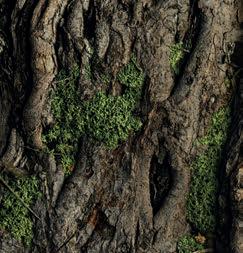


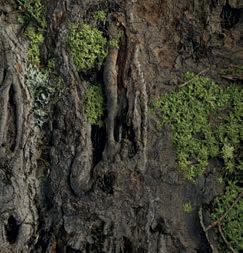








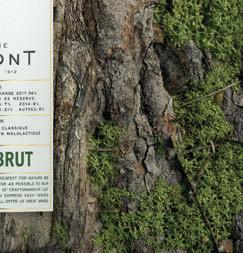






Whisky has caught the eye of a new generation of collectors. James Gurney talks to Berry Bros. & Rudd’s spirit expert, George Turner
Turner, who manages spirits at the St James’s store explains, distillers are marrying casks to produce a coherent and consistent flavour across 100,000 bottles. The casks merchants acquire contain the same water and malt, but are either older or have been developed apart from the mainstream. ‘As a result,’ Turner says, ‘we can bottle something that gives the collector a different perspective on a single malt they already know and love.’
Rob Whitehead, the Berry Bros spirits buyer, plays a crucial role in selecting the right casks for its releases. They receive samples from distilleries, brokers and cask suppliers, carefully evaluating whether each one aligns with their vision for that year or would work for a future release.
‘One key thing to remember is that whisky is a long-term investment,’ Turner says. ‘Decisions made today could impact releases five, ten, or even 15 years down the line. The real magic lies in the experience of our team, who have an extensive mental catalogue from tasting countless whiskies across different styles and ages. That allows them to anticipate how a cask will evolve over time – sometimes, a cask is immediately ready for bottling as is, while other times it presents something completely unexpected and exciting, needing a more creative response.’

Compared to the complexity and mystery of the wine world, the whisky business is simpler and more open to engage with. It’s relatively untroubled by the Byzantine classifications and obscure rules that govern both the making and selling of wine. Nowhere is that more apparent than in the niche world of independent bottling. This is where merchants such as Berry Bros acquire casks in small numbers from different distillers, and finish and bottle the whisky themselves. Typically, these are casks that would otherwise be used to adjust the flavour profile of large-volume single malts before they’re bottled and often feature an elevated flavour note that’s part of the main whisky’s character. As George
There are numerous considerations to work through: should the whisky be finished in another cask to enhance its profile? A whisky initially aged in a bourbon barrel might be transferred to a sherry or port cask for six months to a year, adding another layer of complexity. ‘It works for both the bottler and the distillery – as we’re about uniqueness not homogeneity, so what we might find incredibly exciting isn’t necessarily what a big distiller can use.’
The collectors are much younger and more globally spread out than you might imagine. ‘ There’s something quite subversive and punk about whisky and independent bottling,’ George says, laughing. ‘It feels a little counterculture but the collectors are very engaged in the product. They follow certain distilleries, wanting a sample of everything they make and they want to spend time with the experts, really getting into the nitty gritty about what makes a distillery unique. “Why this cask? Did they change their ferment times? What have they been doing with regards to cask regimes?”’
Turner also notes that in the store, the engagement time with whisky collectors is much longer. ‘They really want to have a conversation. I’m learning a lot from the collectors as much I am teaching them. There are hundreds of independent bottlers and hundreds of distilleries, and you can’t engage with every single one as intensely as you would like, but we have a handful of customers that regularly bring in samples to share with us. It’s a very open and supportive culture.’

And the culture is feeding back into the distillers too, as collectors want to know more about the water, the climate and even what strain of barley is used and where it’s grown. They want to know about alcohol levels, where the casks come from, how practices vary from place to place. ‘We look for a different mix of whiskies as a result of our customers’ interests and look more closely into things like sustainability, for example. We also make sure we balance the collection in terms of price, so there’s always a mix between established premium brands and younger distilleries that are still making their name. Our bottles can be anything from £70 to £5,000.’
bbr.com n
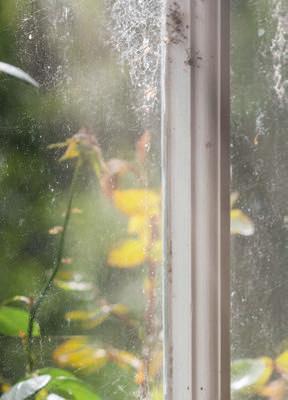

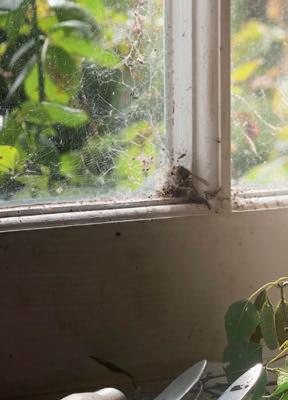




















Van Cleef & Arpels has melded Switzerland’s most creative watchmaking and the maison’s particular magical whimsy. Modelled on an 18th-century design, this planétarium automaton pairs astronomical precision with breathtaking jewellery, including an ‘en trembleur’ setting of the diamonds in the sun, and a melody composed by Swiss musician Michel Tirabosco. vancleefarpels.com
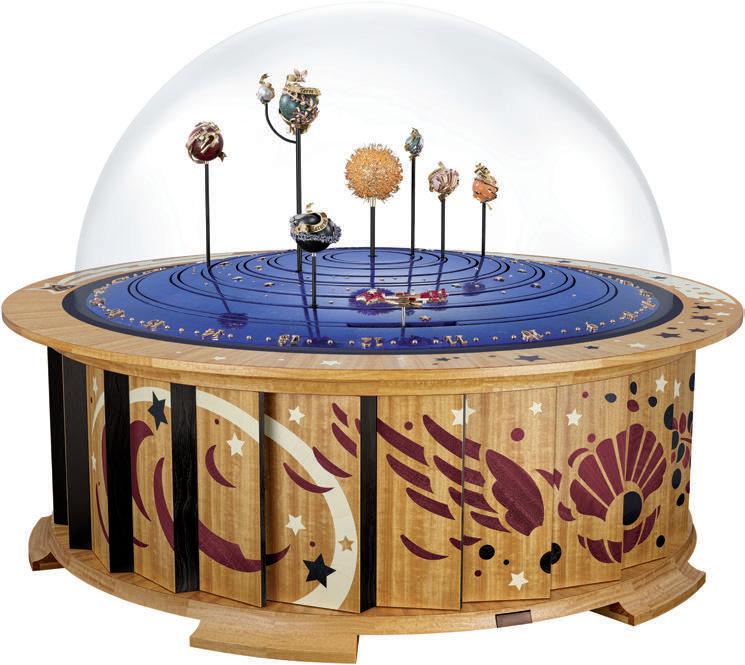
15
lapis lazuli discs on the dial inlaid with stars in rose and white gold and concentric closed-set diamonds

50
6 centimetres high
gemstones featured in the planets: sapphire, quartz, jasper, diamond, moonstone and jet
500
gold stems supporting the rose gold motifs, spessartite garnets, yellow sapphires and diamonds of the sun

Your destination for art buying all year round


